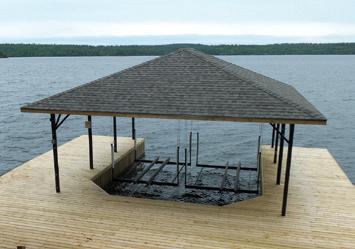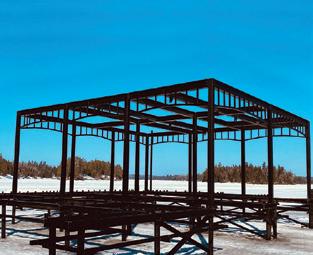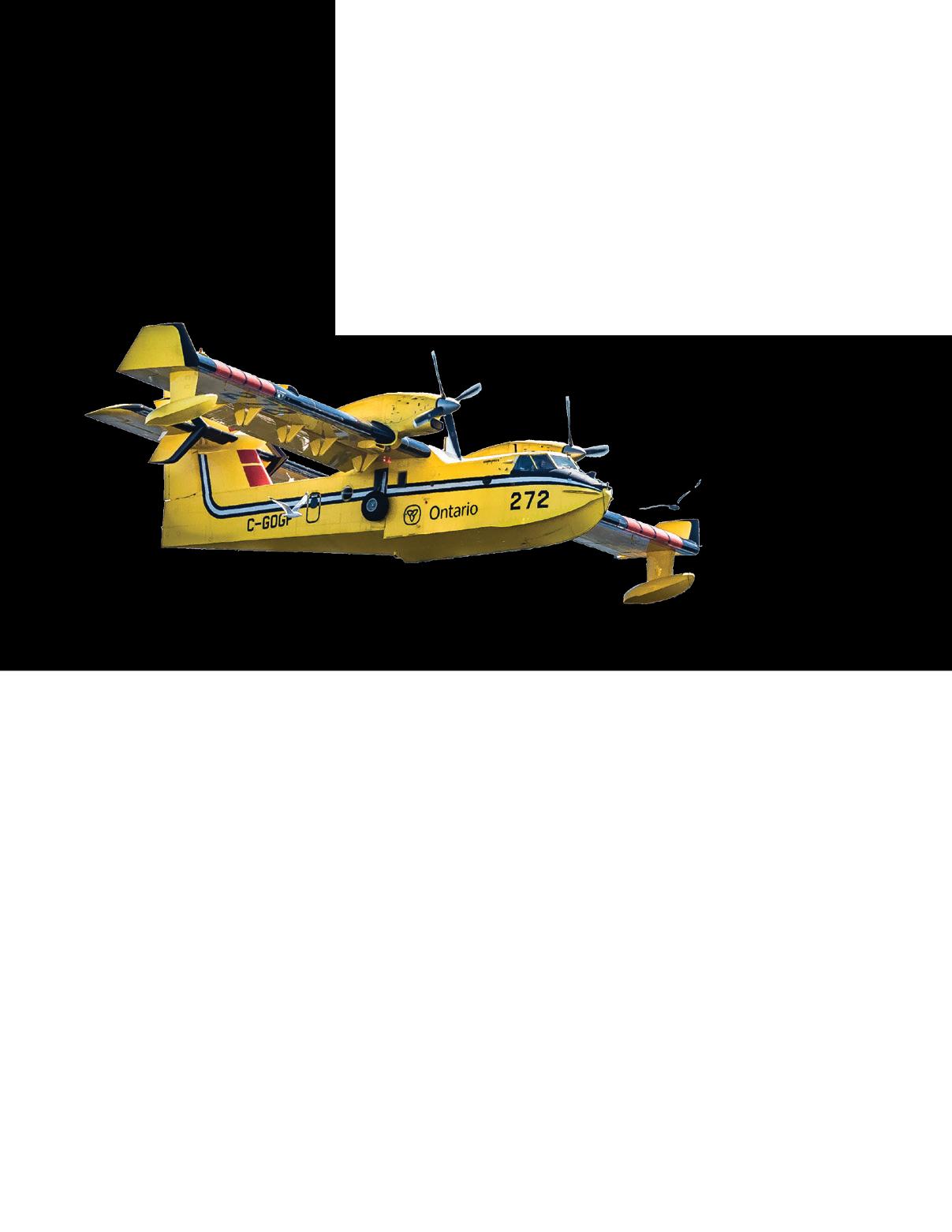
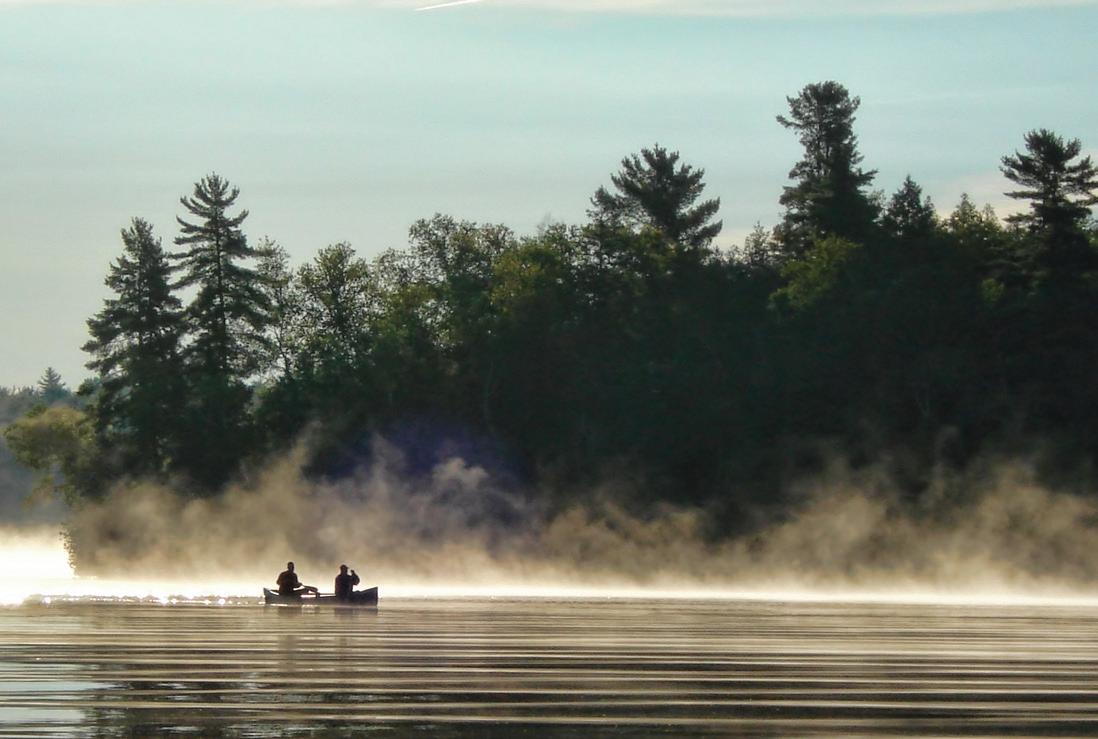
– John Muir




– John Muir


3 LOWDSA
President's Message 3
Executive Director’s Note 4
In memoriam: Dave Schwartz 5
Early spring 2025 photo contest winner 6 LOWDSA volunteer opportunities 7
Save the date: 63rd Annual General Meeting 8 Celebrate Lake Life Golf Tournament 8 Government notes 11
In the District Moderate lake levels targeted for winter and spring 14
marsh memories
How the way we clean could impact our fresh water: The case of QACs 28
LOWWSF: Personnel updates for the Lake of the Woods Water Sustainability Foundation 30
LOWWSF: A Canadian Phosphorus Management Plan for Lake of the Woods 31



GARTH COLLIER

Our LOWDSA team is very excited about spring and summer 2025. In this issue, you will read about our many initiatives that contribute to the well-being and sustainability of the Lake of the Woods area. But we need your help. Every year, we reach out to our community to recruit new Board members. Not only do we have lots of fun meeting members and friends at our various summer initiatives (LakeSmart, Metal Waste Collection, Boat Wash Station, Seedling Day, etc.), but we also benefit from collaboration with the many environmental groups with whom we share a common vision. Here’s a list of some of the many benefits of joining the LOWDSA team. You will be:
• Part of an exciting environmentally proactive team that prioritizes the Lake of the Woods area and informs and provides educational resources to members and the community at-large.
• At the forefront of issues and concerns that impact our lake region. Our committees (Government Affairs, Environment, Membership/Social and Finance) meet five times throughout the year to ensure that our members have access to the most up-to-date news that affects our area. Board members are also connected to the various government agencies—whether it is Forestry, Highway 17 Twinning, invasive species, or issues of municipal concern, we have quick access to new developments.
• Able to participate in environmental sustainability with the International Institute for Sustainability (IISD), the Lake of the Woods Water Sustainability Foundation, Science North and more.
So, don’t be shy, give LOWDSA a try!
Over the winter, a big part of our efforts have gone into refreshing our LOWDSA brand. Soon, you will be able to access our new website and membership portal. We also began a very important review of our governance and administrative procedures. Each committee is being asked to review and report back on their role and function within the Association. This feedback will help us create a new model of “governance and organization” that will guide us into the future. We are excited about the possibilities.
We bid a very fond farewell and best wishes to Todd Sellers, who retired from his role as Executive Director of the Lake of the Woods Water Sustainability Foundation (LOWWSF) at the end of 2024. Todd’s passion and wealth of knowledge has made him an invaluable steward of the watershed in this most recent role and in past roles with the Association. Please read more about Todd’s legacy further on in this issue.
Congratulations to Teika Newton who is stepping into the Todd’s role. Over the past two years, Teika has worked with Todd as the International Watershed Coordinator. Her expertise in regional water science, climate adaptation and policy and governance is invaluable. We look forward to further collaborations and wish Teika every success.
Welcome also to Meghan Mills who has joined Teika as the International Watershed Coordinator. Meghan is in the process of completing her Masters of Natural Resources in Public Participation and Community Engagement in Resource Management. Congratulations, Meghan! We look forward to sharing our passion for protecting our waters.
We are sad to say goodbye to our Board member and Membership Committee Chair Wanda Kabel. Wanda is not only the Chief Administrative Officer for Sioux Narrows-Nestor Falls, but is mother to a seven-year-old son, a very talented artist, and much more. We thank Wanda for her invaluable contributions and dedication during her time on the Board and the Membership Committee. Her insights and leadership have made an impact on our association, and we are grateful to have had her expertise and perspectives. Best wishes, Wanda!
Finally, LOWDSA Board and staff would like to pass on our sincere condolences to the family and friends of Dave Schwartz. Dave was one of our “voices” who wrote frequently for the Area News. He was a strong advocate for the preservation of our environment and, through his writing and teaching, inspired others to work together to preserve the Lake of the Woods area. We were very fortunate to have Dave share his passion for lake living with us. He and his contributions will be missed.
I hope you enjoy this issue. And last, but not least, keep loving the lake!

BRIE MCCARDLE
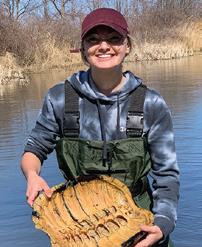
The days are getting longer, the breeze is warmer, and the world is slowly waking up again. It’s a season of renewal, fresh starts, and new energy. Let this be a time to embrace change, set new goals, and appreciate the little joys around us.
I'm not sure about you, but when the groundhog said early spring, I was jumping for joy. Don't get me wrong, I love winter, all the activities and the snow. The cold on the other hand, is my nemesis.
It's been a busy season for us the last few months. I want to share a bit of what we’ve been up to as well as what’s coming. The holidays are always a big renewal time for memberships. After we took a week to reset and enjoy the season, we tackled the mountain of mail and phone call renewals. Getting through that, we moved on to our next item of business, which was the 2024 audit in preparation for our Annual General Meeting.
This year's AGM will be taking place virtually, April 30 at 7pm CST and we invite you all to join us. You can find a link to register on our NEW website. We are so pleased to have launched a new site that is much easier to navigate for events, resources and to contact us. The website process was a big accomplishment for our team, especially Quinn, who spearheaded the project.
In February, we attended the National Environment Gathering in Dryden, a two-day event that connected community members with environmental leaders across Treaty #3. The Gathering was interesting; we learned about different projects and perspectives.
Winterfest 2025 was a success in the balmy -30°C February weather. Our thanks to Vic and her team at Mosswood Adventures for leading this collaboration with community
members, including LOWDSA, and the planning committee. The 3rd Winterfest celebrated the season and brought people together on Family Day weekend. In March, we were out on Lake of the Woods for the ‘Take a Kid Ice Fishing Family Fun Day’ , making birdfeeders and hanging out with the kids.
These events provide us the opportunity to educate the next generation on invasive species, living and playing green and to make connections between fun and the outdoors. Our goal is to show people of all generations how to care for the earth so it can care for them in return. By nurturing respect for nature, we're fostering a future where both people and the planet can thrive.
If you know of any postsecondary students that holds similar values, we have the summer job opportunity for them! This can also be a high school graduate entering the science/ environment/educational field. The LakeSmart team is made up of four Environmental Stewardship Technicians and their job is education and outreach. They host events and engage our members/public about the importance of stewardship. To learn more about this position you can look on our website or send me a message.
Speaking of LakeSmart, if you are interested in having the team visit your lake or neck of the woods reach out to get on the schedule before it fills up. Lake associations, this is an excellent way to engage members and get everyone on the same page. We also have Clean, Drain, Dry signs to be put out at boat launches.
As mentioned, there’s a lot going on! As traces of winter melt away and the world bursts back to life, early spring is a reminder that growth never stops. With energy buzzing around us, there's no better time to roll up our sleeves, set new goals and double down on building a more sustainable future, together.
Happy spring everyone!

The Lake of the Woods area and LOWDSA’s activities take place in the territory of the Anishinaabe Nation in Treaty #3 and the traditional homelands of the Métis Nation of Ontario. The beautiful lakes, shorelines, and environment that we enjoy should be respected for their cultural significance and history.
PUBLISHED BY
Wake Marketing Inc., 140 Main St. S., Kenora, ON P9N 1S9
Publisher: Mike Greaves, mike@areanewsmagazine.ca
Editor: Leanne Fournier, editor@areanewsmagazine.ca
Art Director: Shayla Smith, shayla@wakemarketing.ca
Design & Layout: Mike Newton, Ashley Pereira
Advertising: Deb Polakoff, deb@areanewsmagazine.ca
DISTRIBUTION & MEMBERSHIP
Lake of the Woods Area News is published five times per year and is mailed to LOWDSA members. To receive Area News visit lowdsa.com and become a member today.
TOLL-FREE 1-888-265-9784 PHONE 807-444-8715
Publication mail agreement #43107013. Printed in Canada.
© 2024 LOWDSA. All rights reserved. The contents of this publication may not be reproduced by any means, in whole or in part, without prior written consent. Statements of fact or opinion are the responsibility of the author and may not represent the view of LOWDSA or Wake Marketing Inc.
David (Dave) Saul Schwartz, a longtime contributor to the Lake of the Woods Area News, passed away peacefully at home on December 12, 2024.
Dave was a resourceful and prolific writer, and we always looked forward to his articles in the Area News. From bats and birds to gardening and wilderness preservation, there was no end to Dave’s witty, humorous and insightful first-hand accounts on these and many more topics of interest to our readers. We had hoped the article he’d proposed earlier last year about the declining loon populations would make its way into this issue. Sadly, it wasn’t to be. We will miss Dave’s contributions greatly, as will the whole community.
Dave was passionate about the development of new walking trails and bike routes throughout Kenora and worked to preserve the hidden gem that is Rideout Bay as a green space for future generations. He was also deeply involved in preventing the demise of the IISD Experimental Lakes Area program when funding cuts threatened its existence.
A love of adventure and the outdoors led Dave to extensive world travel. His passion for wilderness and whitewater canoeing also took him on numerous trips into the Canadian Arctic and across the Canadian Shield. He shared some of these experiences with our readers.
Writing was Dave’s medium as an environmental activist, conservationist, and educator. He never gave up fighting, with his words, for what he believed. His “last letter to several newspapers" titled: Trained Seals and Polly’s Folly was published a day before his death.
Dave was also an active member of Kenora Writers’ Group. As the group gathered to share their memories, many smiled, recalling Dave’s grace during monthly meetings when certain issues in the community came up. He’d sometimes withhold his words, but the glint in his eyes hinted that a response was forming and that the local newspapers or politicians were likely going to hear what was on his mind.
After Dave retired as an educator from Beaver Brae Secondary School in 1998, he published his first book, Lateral Thinking, where he intertwined clever wordplay with satire to provide enlightenment on a wide range of topics. We have given Dave the final word by sharing an excerpt from the book.
Dave is survived by his wife Trish (Pat), son Berk and wife Amy, granddaughter Emily, sister Jan Peterson, brothers Ron, Reg, John and Graham, his special cousin Diane Schwartz-Williams, and many valued friends and cousins.
Paddle easy dear friend.


Reprinted from Lateral Thinking – Hilarious Satire and Wordplay, by Dave Schwartz
Lateral Thinking comes to a sorry end
We’re a sorry lot, us Canadians. Masters of apology. It seems that no matter what happens, an apology is warranted. If you step on my foot, we both apologize. If I step on your foot, we both apologize.
The propensity for apology is so deeply entrenched in the Canadian psyche that the Province of Ontario deemed it necessary to pass the Apology Act which states that an apology is not an admission of guilt. With this law in place, if you apologize for breaking someone’s fist with your nose, the apology will not constitute admission that you are guilty of assault.
It seems you have read my book, so I owe you an apology. If you enjoyed the book, I’m sorry that it wasn’t longer and that your reading pleasure was inexcusably curtailed by its premature termination. If you didn’t enjoy the book, I apologize for the imposition on your time. If my humour offended you in any way, of course I’m sorry about that. However, if you treasure offensive humour, and didn’t find it, what can I do but apologize?
I’m sorry it had to end this way.
LAKE OF THE WOODS DISTRICT STEWARDSHIP ASSOCIATION
PRESIDENT: Garth Collier, Schnarr Lake
PAST PRESIDENT: Christine Semenchuk, Bigstone Bay
TREASURERS:
Carley Fyke, Welcome Channel; Jeff Rempel, Pine Portage Bay
CHAIR, MEMBERSHIP: Trevor Templeton, Minaki
CHAIR, GOVERNMENT AFFAIRS: Don Parfitt, Winnipeg River
CHAIR, ENVIRONMENT: Adam Blake, Corkscrew Island
DIRECTORS AT LARGE: Sean Campbell, Woodchuck Bay
Martha Mankewich, Nanton Island
Bob Stewart, Longbow Lake
EXECUTIVE DIRECTOR: Brie McCardle, 807-444-8715 executivedirector@lowdsa.com
P.O. Box 1160 Kenora, ON P9N 3X7
EMAIL: info@lowdsa.com
TOLL-FREE: 1-888-265-9784
PHONE: 807-444-8715
M N LOWDSAssoc
P S LOWDSA V Lake of the Woods District Stewardship Association
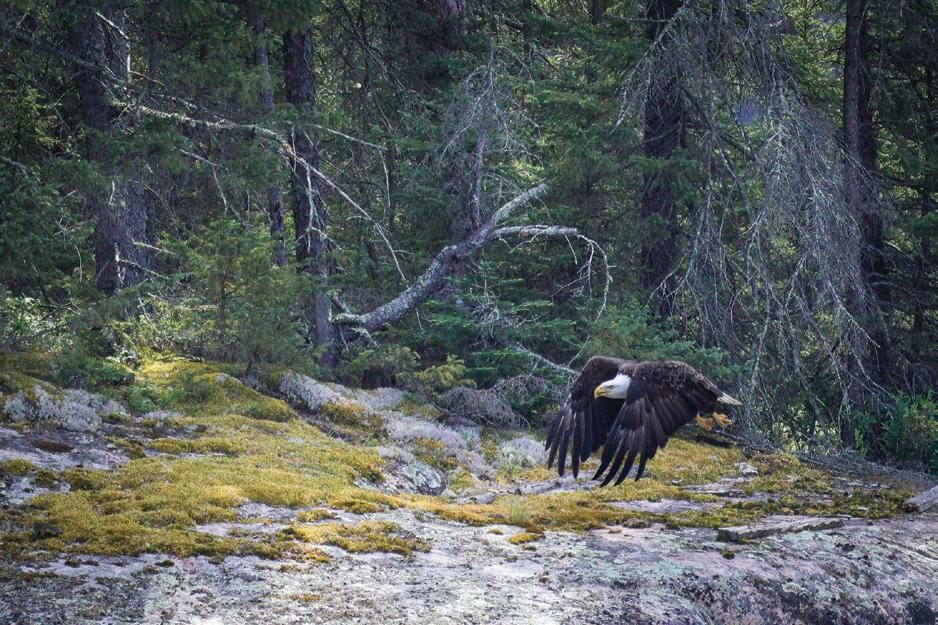
Our Early Spring Photo Contest Winner is Bill Hamlin of Dogtooth Lake who writes:

We saw the eagle on a small island in front of our cabin on Dogtooth Lake. We jumped in the fishing boat with my niece Mya driving while I took pictures. After posing nicely for a few still pictures, the eagle made a low pass across the front of the island and I was lucky to capture it in flight.


If you have a keen interest in being part of a vibrant and proactive association that is focused on preserving our beautiful area for future generations, we urge you to join the Lake of the Woods District Stewardship Association team.
LOWDSA’s Nominating Committee is seeking volunteers from around the Lake of the Woods region to join our Board of Directors. We’re looking for enthusiastic individuals who:
• Have experience in marketing, business, organization management, government affairs or environmental science
• Can attend up to six board meetings annually (combination of virtual and in-person)
• Will serve on one LOWDSA committee
• Can participate in scheduled LOWDSA community and member events
We are also looking for committee members to join our Government Affairs, Membership and Communications, Environment and Finance Committees. We welcome members with related experience who can attend regular meetings and support the team in achieving key objectives.
If you are interested in either becoming a board member or joining a LOWDSA committee, please submit your name, address, email address and phone number along with the following information:
• A brief written outline detailing your relevant experience and specific interests in the Lake of the Woods region and the Association’s work
• Indicate where you reside or spend your time within the Lake of the Woods region.
Send by email to Chris Semenchuk, Past President & Chair of the Nominating Committee chris@lowdsa.com or by mail to the LOWDSA Nominating Committee, PO Box 1160, Kenora ON P9N 3X7.
Please refer to the LOWDSA website, lowdsa.com, for further information on LOWDSA’s activities and the work of the Association.






We are pleased to invite you to the Annual General Meeting (AGM) of Lake of the Woods District Stewardship Association scheduled for:
Wednesday, April 30, 7 p.m. CST online via Teams
The agenda will include:
• Review of past years activities and financial reports
• Election of new board members
• Future plans and key initiatives
• Open discussion and Q&A
Your presence and participation are highly valued, and we encourage all members to attend. Please register online at lowdsa.com/events or contact Quinn Miller at communications@lowdsa.com.
We look forward to your participation.

Mark your calendars and get ready to golf for a cause. The Celebrate Lake Life Golf Tournament is your chance to hit the links while supporting LOWDSA’s stewardship efforts. Join us for a day of fun, friendly competition.
When: Saturday, July 19, 2025
Where: Kenora Golf & Country Club on the shores of Lake of the Woods
Everyone is welcome to play. Not a member? No problem, although members enjoy exclusive savings.
Sponsorship opportunities available. Help make a difference and gain exposure for your business. We are also seeking donations for our silent auction.
For sponsorship, donation or early registration contact communications@lowdsa.com. More details coming soon.
Before you go fishing, review the 2025 Ontario Fishing Regulations Summary to familiarize yourself with the regulations and any updates for your Fisheries Management Zone (FMZ). This summary is available online and can be downloaded as a PDF, so you can save it on your mobile device for easy access.

Expand your own beautiful patch of forest at the lake... and help reduce our carbon footprint.
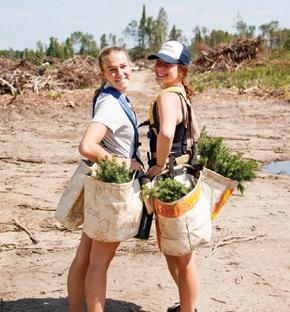
of
Continuing the great work of LOWDSA members since the early 90s with over 340,000 trees planted and another 10,000 for 2025.
Members pay only $15 for a bundle of 15 seedlings. Non-members $25/bundle.
Seedling orders are open to members only until May 1, 2025. After that date, we will open up sales to the public on a first come, first served basis.
Saturday, May 17, 2025 from 10 am – 1 pm
Two locations: Longbow Lake Firehall and Clearwater Bay Firehall
Wednesday, May 21, 2025 from 10 am – 1 pm
Sioux Narrows Northern Ontario Sports Fishing Centre
It's easy to order! You can order your red pine seedlings online at lowdsa.com/cpages/seedlings. You can also order by mail (see page 13), call 888-265-9784 or email info@lowdsa.com.
Every edition of Area News is available to our members online, so you can catch up on what's happening whenever, wherever you are. Visit lowdsa.com to learn more!
You can book a LakeSmart dock visit or to your lake, property or event in July or August. Take advantage of our knowledge & resources— email epc@lowdsa.com!


A question we are often asked is, "Why red pines? Why not some other variety?"
We went to the source for the answer and checked in with our supplier, PRT’s, Dryden operation. What we learned is that the red pine can tolerate poor, rocky and sandy soils along with a variety of moisture levels. They said they would call it the most flexible and versatile species to plant in Ontario. This means that the red pine is very well suited to the many different terrains and soils found in our watershed, and has the best rate of success overall when all variations are considered.
The red pine possesses an unusually low level of genetic variation within and between populations (northwestern Ontario to southern Ontario for example). It is self-fertile and self-compatible. The possibility that the red pine is derived from a single population established sometime during the Pleistocene era is very likely.
Simply put, the red pine is very well suited to the many different terrains and soils found in our watershed, and has the best rate of success overall when all variations are considered.

We love to hear from our members and we want to share your story! Help us continue to make this magazine great— send us your comments, suggestions, pictures and story ideas.
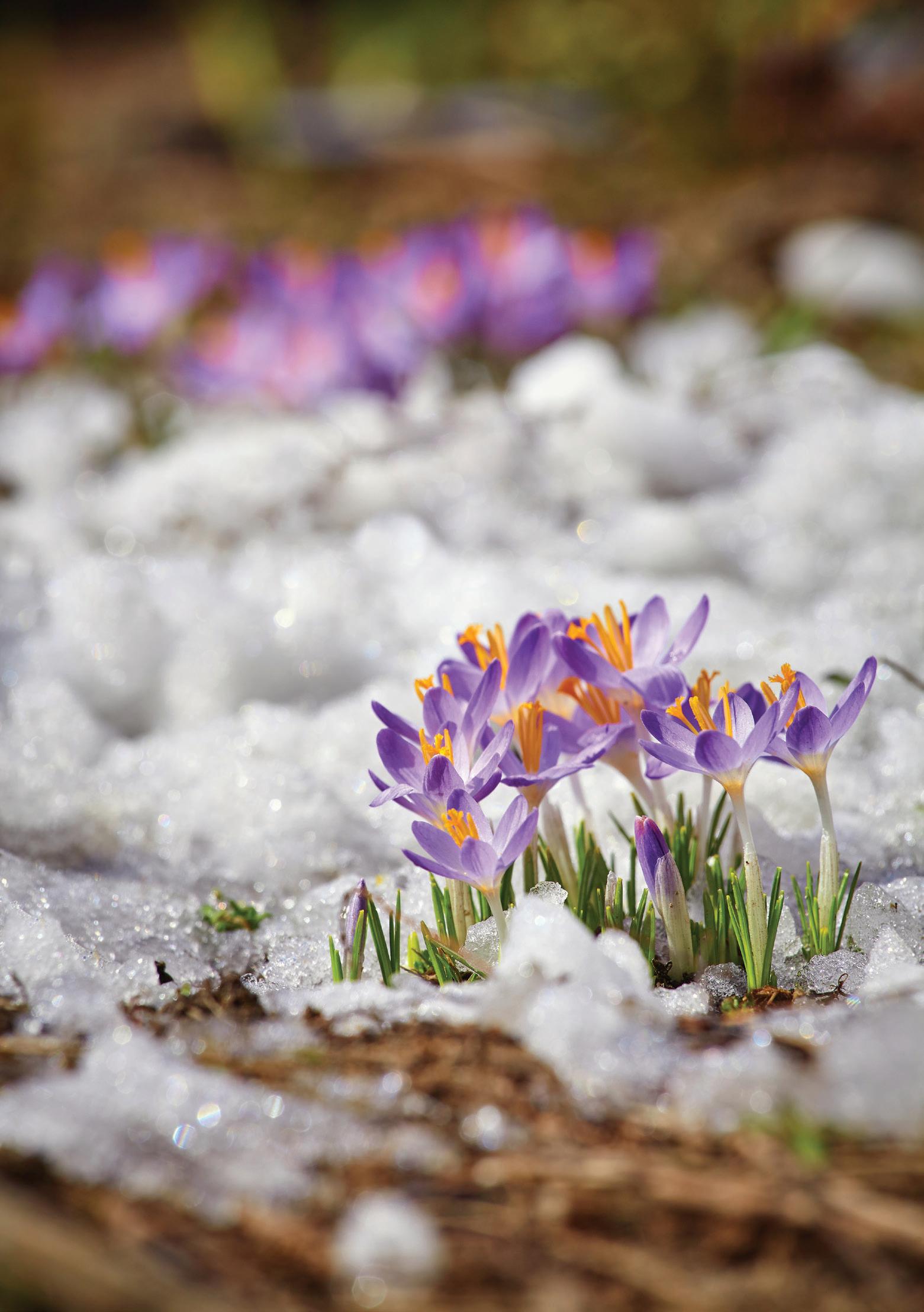
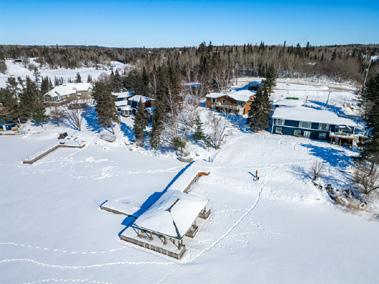



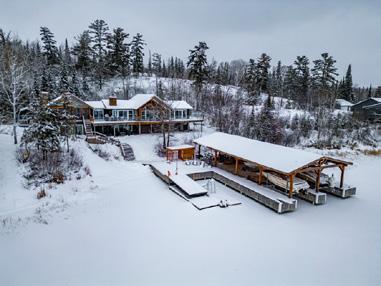
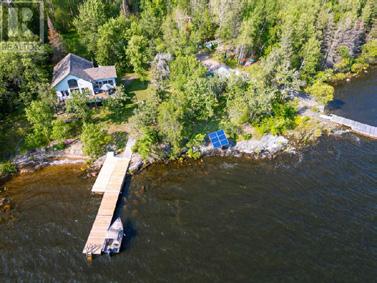








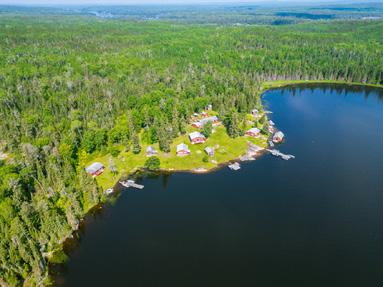

Historic land purchase paves the way for new hospital in Kenora
Ogimaawabiitong – Kenora Chiefs Advisory (KCA) has made a landmark purchase of 118 acres in Kenora Ontario. The address at 1060 Lakeview Drive, formerly the Green First Forest Products site, will be host to two capital projects. The land will support the expansion of Wiigwas Elder and Senior Care and the construction of the All Nations Hospital, a modern, culturally safe facility. This marks a crucial step forward in healthcare for Treaty #3 territory.
The new hospital will be significantly larger than the Lake of the Woods District Hospital (LWDH), featuring single patient rooms, an expanded emergency department, and co-located services in mental health, addictions, and social services. “The new hospital will offer a blend of Western medicine and Traditional Healing including a complement of services specifically for Indigenous patients that promote Anishinaabe holistic worldview(s) of wellness, recognizing that culturally safe spaces help address health disparities,” said Ogimaawabiitoong in a January press release.
In collaboration with the LWDH, project leaders are engaging with residents and First Nation communities to ensure the
facility meets the needs of all patients. Both organizations, KCA and LWDH emphasize that this project is more than just infrastructure; it's about improving healthcare access, addressing systemic barriers, and fostering an inclusive, respectful environment for all.
Pending provincial approval, the project will soon enter the design and construction phases. We will continue to update as this transformative healthcare development progresses.
In the heart of Canada’s winter wilderness lies the Windigo ice road. Stretching across the frozen lake and islands, this ice road is a seasonal artery that is both a vital transportation route and connection for the communities to lake life.
There is a Facebook page called ‘Updates for the Windigo Ice Road’ that does just that. Updates are made regularly with notices such as closures, ice ridges. This is the only Facebook page where official communications are made regarding the ice road from the Ontario Ministry of Natural Resources (MNR) landing in Kenora to Windigo Island. Comments are not to be viewed as official communications.
To access to the lake through Wauzhushk Onigum Nation (Rat Portage), passes can be purchased at the band office for $100 for the season.


Construction and maintaining the ice road is no simple task. Crews monitor the ice thickness and ensure the route remains passable. Despite these efforts, the road’s unpredictable and always changing nature means drivers must exercise caution and travel at their own risk.
The ice road may be closed by the time the Area News is mailed. Check Facebook for updates.
by Garth Collier, Forestry Committee
The MNR is conducting research about jack pine budworm infestation and its impact on increased forest fire risk.
The jack pine budworm is a native species that feeds on jack pine and red and white pine. It is the most destructive pest affecting trees in Ontario. Approximately 28,532 hectares were impacted by infestation. Spraying to reduce budworm populations has occurred in 10,268 hectares.
The main characteristic of infestation is the pronounced defoliation in the first year. This results in growth loss, top kill, and tree mortality (probably within three years). This type of damage reduces wood supply. It also drastically increases fire hazard, which is the subject of the MNR study.

Matthew Corbett, Fire Science and Planning Specialist and Dr. Dave Morris, Research Scientist, both with MNR, are examining how forest fuel changes, created by budworm infestations, affect fire behaviour in immature, semi-mature and mature jack pine stands. They are also questioning if it increases or mitigates the overall landscape risk.
B.C. Wildfire Service describes forest fuels as all the burnable materials in the forest, from underground to treetops. Forest fuel management involves the modification of a forest structure to reduce forest fuel accumulations available in a wildfire. The goal for managing hazardous vegetation fuels on the landscape is to create fire resilient ecosystems.
In the study, Corbett and Morris isolated five stands each of budworm-affected and -unaffected tree stands. It was noted that living tree volumes had decreased between 40 to 50 per cent in affected areas, thus creating a greater forest fire hazard. Also noted, was that age and drought conditions can combine with jack pine budworm infestation to increase tree mortality.
Study results suggest that post budworm commercial thinning/ fuel management may yield open parkland stands while also reducing fire fuel loads. In this way, the overall threat of fire may be reduced.
The full MNR report will be available on the LOWDSA website at lowdsa.com. For more information contact: matt.corbett@ontario.ca or dave.morris@ontario.ca. an

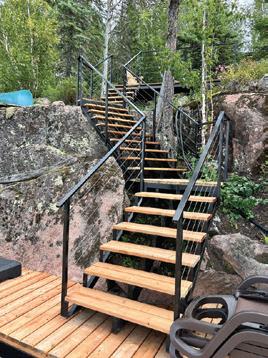

Renewal Renew online, or use this form to renew by mail or email.
Your continued support of LOWDSA's programs and initiatives does make a difference.
Member Name: LOGIN EMAIL:
Alternate Email: Address:
Cottage Phone:
Mobile Phone:
YES, send my renewal notice by email
Use your smartphone camera app to scan this QR code and renew your LOWDSA membership online.

You can also contribute to our EISP Fund, purchase pine seedlings, and order gift memberships while you’re there!
Renew by phone: 807-444-8715 or 1-888-265-9784
Renew by email: membership@lowdsa.com
You can choose between a Full Membership (magazine mailed) or a Virtual Membership (digital magazine).
»
Kenora: May 17, 2025 10am - 1pm
Sioux Narrows: May 21, 2025 10am - 1pm
Help reduce our carbon footprint while expanding your own patch of forest. Please order your seedlings by May 1, 2025.
Clearwater Bay Firehall Longbow Lake Firehall Sioux Narrows Northern Ontario Sports Fishing Centre # of bundles (of 15) __________ at $15 each
A donation of $5 from each member would support an entire LakeSmart position and contribute to LOWDSA’s mobile boat wash station! Contributions to the EISP Fund can be made online any time at lowdsa.com/campaigns/eisp.
$250 $100 $50 $25
Other $_____________________________ TOTAL $
To purchase multiple gift memberships, please attach each individual’s contact information to this contact form.
Full Membership, $80 Virtual Membership, $80
Recipient’s Name: _______________________________
Recipient’s Email: _______________________________
Recipient’s Address: ______________________________
Please send give card with message:
Payment Options
$
or call 1-888-265-9784
BY JEFF POLAKOFF, LOWDSA REPRESENTATIVE, LAKE OF THE WOODS CONTROL BOARD
As winter arrived and the freeze began in December, the level of the Lake of the Woods was approximately 322.6 m (1058.5 ft), or in the normal range for the time of year. The level was consistent with the target set in the regulation strategy for freeze-up of between 322.5 (1058.2) and 322.8 m (1059.1 ft). This target is aimed at limiting infrastructure damage to water lines and docks while reflecting natural resource and fishery priorities. They compare to the level on your nautical charts of 322.8 m (1059.0 ft.).
Winter months are a good indicator of how much Canada’s weather is evolving as the climate warms. The changes have a direct impact on our water levels in the Winnipeg River Basin, including lake of the Woods, because of shifts in precipitation patterns, extreme weather events, increased evaporation and other factors. After the warm winter we experienced last year, a return to a more normal winter was expected. Clearly however, “normal” in the age of climate change is a relative term.
Last year Canada and the world experienced the warmest winter on record. According to climatologists Canada is warming twice as fast as the rest of the planet and average temperatures have warmed by over 3.5 degrees since 1948.
As a result of this warming trend, research has shown a continuing reduction in the duration of ice cover on lakes in the northern hemisphere. For Lake of the Woods, it has been estimated that Whitefish Bay, which features the deepest part of the lake, saw an increase of 27.7 ice-free days between 1960 and

2010 with two additional days since that time. Based on regional climate projections for Northwestern Ontario, researchers at the Experimental Lakes Area have estimated that the duration of ice cover will decline by an additional 20–30 days by 2070. This warming trend will clearly have an impact on a wide range of activities as well as natural and biological processes for the basin including seasonal water levels. The warming trend also make forecasting more challenging to predict over the longer term.
Last year's record warm winter was affected by El Niño, which is a climate pattern tied to shifting warm water in the Pacific Ocean and the position of the Pacific jet stream. This year El Niño was replaced by La Niña. In the Winnipeg River basin, the effects of La Niña typically result in colder and wetter conditions. Based on water temperatures in the Pacific Ocean reaching the required temperature criteria climatologists confirmed La Nina’s arrival in the second week of January. It is anticipated that these conditions will last through the winter and possibly into spring when neutral conditions are expected to return. We will have to see how accurate the forecasts are as we progress towards spring.
In mid-January, the level of Lake of the Woods was approximately 322.58 m (1058.25 ft) or low normal. The Board’s end-of-winter target level is consistent with past practice with an April 1 target set at a range of between 322.38 m (1057.7 ft) and 322.5 m (1058.0 ft) depending on the level of precipitation in the remaining winter months and inflow received in spring.
Please be cautious and aware of local conditions when on or near the ice as we enjoy the end of winter 2025. For up-todate information on water levels and the work of the Control Board please visit the website at lwcb.ca. an
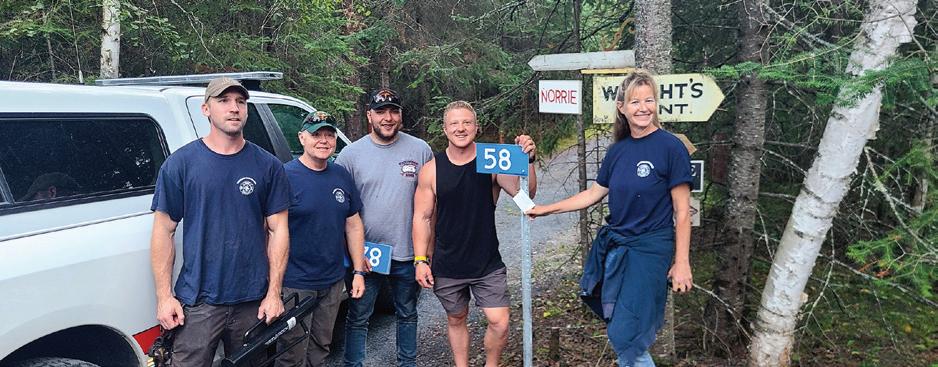
BY BOARD OF DIRECTORS, MCKENZIE-CLEARWATER FIRE DEPARTMENT
For 34 years, McKenzie Clearwater Fire Department (MCFD) has been dedicated to saving lives and property. Now, it is on the brink of achieving a long-awaited goal: signage to guide emergency responders across its 160 roads and over 2,700 properties. Thanks to this ambitious effort, land-based signage in the KeeMan area now meets the Bell 911 standard. There are plans to address water-access properties in 2025.
The 21 dedicated volunteer firefighters of MCFD face substantial challenges, including long distances, harsh weather, and physically demanding conditions. Surprisingly, one of their greatest obstacles has been a simple, but critical issue—accurate property addresses. Too often, distressed callers describe emergency locations with vague phrases like “the cottage with the red roof.” This is far from enough information in a potentially life or death situation.
For emergency services to operate efficiently, precise location details are critical. A wrong turn can mean the difference between saving a life or losing a home to fire. Recognizing this need, MCFD launched a campaign in 2018 to secure funding for improved signage. When external funding fell through, MCFD, led by Board Chair Rick Suche, took matters into its own hands. With community support for the $200,000 budget, the project has been entirely funded by donations and MCFD efforts. Thank you to the KeeMan Community for your very generous contributions.
The project’s meticulous planning was spearheaded by long-time Board Director David Reid and executed in five phases: Mapping, Ground Proofing, Resident Engagement, Signage Installation, and Communication. In 2020, mapping expert Doug Jordens created a digital map of the KeeMan area, detailing its 2,700+ properties. This data was then “ground proofed” by firefighters and volunteers. They verified the map on foot, covering countless kilometers over many hours.
Naming roads proved to be a challenge. Some roads were nameless; others were identified by outdated fire road numbers. Each needed a unique name to avoid confusion with neighbouring jurisdictions. Roads with established names or official signage retained their designations. Unnamed roads were christened in consultation with residents, following official protocols.
Addressing properties followed a Canadian standard formula: (Meters from road start) ÷ 10 * 2 + (1 for right side, 2 for left side).




Shared driveways received a number with each property also assigned a unique letter, typically arranged in a logical order first to last or clockwise. By summer 2023, student Owen Loney was hired to assist the project with mapping, documentation, community outreach and sign orders. Hundreds of signs were designed and printed. Installation began on McCallum Point Road as a pilot project led by firefighters and volunteers. Fire Chief Dale Charbonneau quickly realized that the Canadian Shield’s rocky terrain would make the process very time-consuming. Thus, in 2024, local contractor Rick Wright joined the effort, installing signs throughout the summer and fall. Rick has received very positive feedback to the sign project saying, “The number of people who personally thank me while I’m on the job is overwhelming.”
By the end of the 2024 season, MCFD had successfully installed 2,288 street, branch, and property signs. This completes all land-based signage. The final phase—addressing 890 water-access properties—presents new challenges. Placement strategies for these signs are under discussion, as MCFD’s two fire boats will need clear and visible markers to locate people or properties in peril. Additionally, the department hopes to install dockside signs for mainland properties, as many emergencies occur on water or ice.
The Communication Phase of the project is well underway. Residents have begun using their new addresses, adding them to platforms like Google Maps for easier navigation. Emergency services, including OPP, EMS, MNRF Fire, and others, are integrating the updated addresses into their systems. This process is expected to continue into 2026. Early results show improved response times and reduced stress for property owners, dispatchers, and firefighters.
This monumental project represents an important step forward for MCFD and the community it serves. As the department continues to address water-access properties and refine the system, donations remain crucial to its success. Visit mckenzieclearwaterfire.ca to contribute to this vital initiative. an
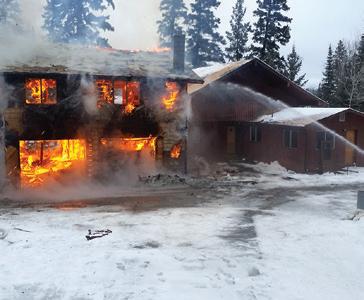




After 20 years of dedicated service, Todd Sellers has retired as Executive Director of the Lake of the Woods Water Sustainability Foundation. He says it’s time to “enjoy more family, friends and time at the lake.”
By Leanne Fournier & Teika Newton

Back in the days when things were just getting started, Todd met with Lake of the Woods Water Sustainability Foundation’s founding president Tony Stephens (back right), the late Prime Minister John Turner and Foundation director Polly Craik. Polly is a current director to this day.
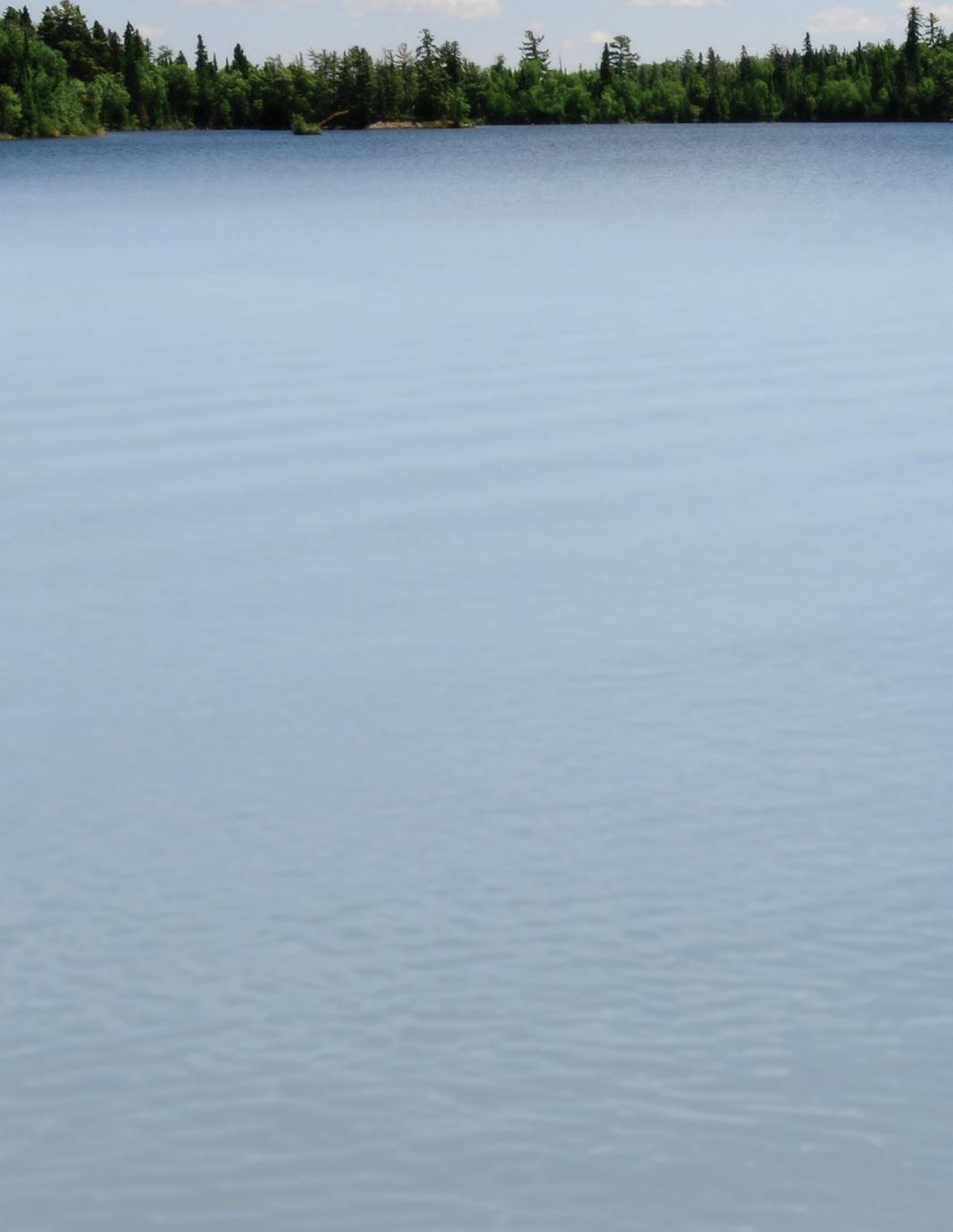
It’s well-deserved. In his founding role with the Foundation, Todd was instrumental in helping to forge international relationships at all levels and sectors in pursuit of the sustainability of the water quality of Lake of the Woods.
He’s cared about this as long as he can remember. “Rivers, lakes and fish were the anchor of our existence, growing up at the family cottage in Minaki,” he said. His grandfather bought “Sellers Island” in 1946, but the Sellers family had been coming to Minaki since 1912.
Todd’s family commuted to the cottage from Saskatoon, Ottawa, and then Winnipeg. His parents staggered their holidays, so the kids got to spend most of the summer in Minaki. Todd became a Minaki fishing guide in high school, which continued through university and to today.
His career path was pre-ordained by life on the water. He went to Trent University, on the shores of Otonabee River, where he studied biology. He was indoctrinated by many professors who were active in fisheries and other watershed developments. This included David Schindler, who was a founder of the Experimental Lakes Area project. After obtaining his B.Sc., he got a job at The Rawson Academy of Science where he worked with some of the premier water scientists of the day. After that, he followed Schindler to the University of Alberta for his Masters in Biological Sciences with field work at the ELA.
He then took a “lateral” into the technology world, working in Ottawa. But this was too long a commute to Minaki. Todd moved back to Winnipeg, starting his own company as a software developer, in the mid 1990s.
It was around that time a family friend, Catherine Milner, encouraged him to join the Board of LOWDSA’s predecessor, the Lake of the Woods Property Owners Association (LOWDPOA).
Todd was impressed to see the Association getting involved with concerns about water quality on Lake

of the Woods. LOWDPOA was happy to attract a new young director with so much expertise. He was directly involved when the Association commissioned a State of the Lake Report in 2001, which declared that water quality would be a limiting factor to development of any kind on the lake. Algae blooms on Lake of the Woods, driven by excessive nutrient loading, were becoming more frequent, toxic and lasting later in the year.
In 2004, Todd was a member of LOWDPOA’s environmental committee when the first Lake of the Woods Water Quality forum was convened. This was a much-awaited gathering of all agencies—Canadian, American, Ontarian, and Manitoban—that had water quality data on Lake of the Woods.
“That first forum is what we now call the Rainy Lake of the Woods Watershed Forum,” said Todd. “It was an opportunity to get researchers and policy makers in the room together for the first time and it became an incubator for collaborative research and policy at all sides of the border.” He credits this as a highlight of his career.
He also credits the late John Turner, a former Prime Minister and long-time Lake of the Woods property owner, for his efforts to bring international policy action into the conversation. This included charting the course to secure a mandate for the International Joint Commission from Canada and the United States. The Foundation was formed In 2005, while Todd was LOWDPOA’s president.
This would be a sister organization to LOWDPOA. The aim was to put a plan in place with international coordination to support the long-term health of the watershed. Todd would be the Foundation’s first Executive Director, a role he’s held for the past 20 years.
Under Todd’s direction, the Foundation has coordinated work among government agencies, Indigenous communities, civil society organizations, the public, academia and scientists, and the International Joint Commission of the U.S. and Canada. He championed international watershed governance, first establishing the International Watershed Coordination
Program, then pressing for a mandate for the International Joint Commission’s participation in the region. The Foundation’s advocacy resulted in the establishment of the IJC’s International Rainy – Lake of the Woods Watershed Board in 2013. It plays an active role on this board, with Todd as a member since its inception.
The list goes on and on. You can read more at lowwsf.com.

Todd hopes the next generation, who he calls “the inheritors our waters”, will continue this important work. He quotes the late Prime Minister John Turner who said something to the effect of, “You get them to enjoy the place and learn to love it and they will take on the responsibility to protect it.”
He adds, “We need our young people to take these values and all this effort and carry it forward. It’s incredibly important to develop that connection.”
We are all enormously grateful to Todd and wish him more time on the water, enjoying the pristine environment he has worked so hard to uphold. an

in






Last summer was quite the celebration at the family cottage. We celebrated my dad’s 60th summer on Lake of the Woods. Ruth Bowiec chronicled our family’s journey to Lake of the Woods in her Bee Line article column in the local newspaper for my second birthday, so this isn’t the first time our family story has been told.
By Suni Haberland,
Clearwater Bay

As the 1988 article stated, my dad, Robert, moved to Winnipeg in the early 1960s from Kansas City with his parents/my grandparents, Bill and Clint, for my grandpa’s job with Inter-Collegiate Press. Though my dad’s first lake experiences are in Nestor Falls, the fun really began in 1964 with the purchase of the family cottage on Clearwater Bay.
My dad spent his summers and winter breaks on the lake working around the cottage, boating everywhere in a tiny tin boat with nothing more than a lap belt flotation device, fishing with his dad, and making friends he still has today. I love hearing those stories with a cold one on the dock. Though my dad and his family eventually moved back to the United States, the cottage remained. After retirement, my grandparents spent their summers here, much like my parents, Robert and Penny, are now.

Our property was one of the original on Kenricia Road— lot 14. Until fire road distinctions were made, and now addresses, you could find us by this sign. While it now has no official meaning, our property will always be known as Hab’s 14.







My mom came to the lake for the first time in 1979, the year she and my dad got married. In 1986, I was born and named Suni (pronounced like sunny) after Sunset Country. My name seems to fit me well—I enjoy being at the lake as much as the previous two generations.
My first trip to the lake was when I was just two weeks old. That summer is talked about often—Father Comeau baptized me at Notre Dame Catholic Church in Kenora, I met my paternal grandparents, and I had my first boat ride while my sister, Shelby, swam around the Kendall Inlet Island.
I spent the month of July on the lake until college when summer jobs beckoned, allowing only a week or two. I have since graduated from the University of Kansas (three times!) and am a high school teacher and coach in the Kansas City area. Once my parents leave for another summer on the lake in May, I begin the countdown to my time there as well.
With summers off, I am able to spend the entire month of July on the lake. I’ve recently taken up fishing with my dad and am hooked! I also enjoy rides in the paddle boat, helping my mom and dad with the seemingly never-ending list of chores, a good local brew on the dock, and, of course, reconnecting with our lake family.
Somehow over the last 60 years between moves back to the States, careers, marriages, and children, the cottage remains in our family. I’m certainly blessed that many of my best childhood memories revolve around my time on the lake and my dad would say the same. It truly is a magical place.
1. 2024 was the year of celebrating 60 years of Hab’s 14. This is my mom, dad, and I with our neighbours, The Rousseaus, who we’ve celebrated many milestones with over the years.
Pictured from left: Alex Rousseau (taking the selfie), my dad, mom, Christina Rousseau, Sienna Rousseau, Lyle Rousseau, me, Judy Rousseau, dog Maya, and Chris Rousseau;
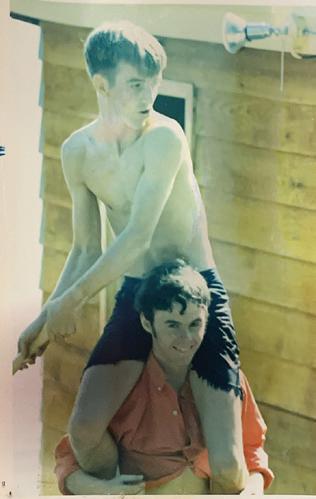
2. My Grandma, Clint, my mom, and I having fun in the lake! Early 1990s.
3. Dad and David Caverly in 1969. This is a favourite picture of mine—it’s been on our picture board in the cabin since before I was born! The Caverlys are one of the original cottage owners on Kenricia Road.
4. My mom and I on the infamous Torpedo 1990. When I was a kid, my mom didn’t get to spend as much time at the lake. My dad and I would join my grandparents for a few weeks and then my mom would arrive. I never got in the water until my mom was there!
5. The Haberlands always had all the toys. The water slide was installed by my dad in the early 1990s. This is my mom going headfirst!
6. It wasn’t until the last 10 years that I took up fishing with my dad and now the neighbours. At the time, this was the biggest pickerel I’d ever caught, second only to another large fish that summer.
7. My dad and his sister, my Aunt Linda, snowmobiling with their parents, my grandparents Clint and Bill.
8. My dad snowmobiling at the cabin in the late 1960s.
9. My dad and David Shumka, another neighbour in 1969. This is another favourite picture of mine that showcases all the fun my dad had as a kid. I love hearing his stories!
10. From left: Ian McTaggart whose family had property in Deception Bay, Craig Hunter who still has his family's cabin on Deception Bay, my mom, and dad at our place. The kids my dad met as a kid are still his friends and part of our family.


The plan is for this milestone to just be the beginning of the story—and that the first 60 years leads to another 60 years. The generational cottage owner is becoming a thing of the past and it's something that our family cherishes.
I hope to be the third generation of Haberlands on Clearwater Bay at “Hab’s 14”! an
11. My grandma LOVED the outdoors, especially the birds!
12. My first visit to Lake of the Woods, Sunset Country. I was named Suni (pronounced like sunny) after this beautiful place. This is my parents, my sister, Shelby, and I at Notre Dame Cathedral in August 1986—just 2 weeks old—where I was baptized by Father Comeau. I also had my first boat ride that same summer as the family followed my sister as she swam around Kendall Island.
13. My grandparents wintered in Florida and summered at the Lake. Due to distance, I saw them the most in July. They loved having me and showing me off. This is my Grandpa Bill, Grandma Clint, and me with Mrs. Caverly—one of the original property owners on Kenricia Road. Photo circa 1987.
14. My dad and grandpa with a stringer of fish, mid 1960s.
15. This is my dad, mom, and I celebrating with cakes from the 60th grand celebration in July 2024.



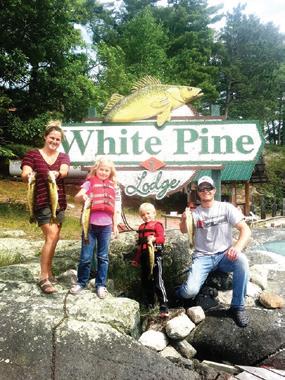
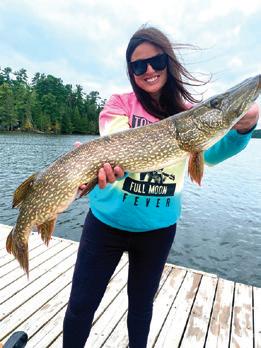

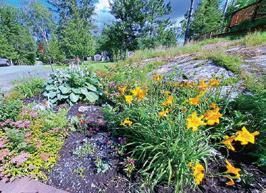




ASKING $1,975,000
$375,000 DOWN, 6.7% INTEREST, CASH PAYMENTS $7,940/MONTH
» There is nothing quite like this anywhere on Lake of the Woods. Perfect for a corporate retreat or family estate.
» Water on three sides, so it has the privacy of an island EXCEPT you can drive to it!
» Six rental units—all are up to code and in near perfect condition. Sleeps up to 37 people.
» Building sites for 6 more cabins. Water, sewer, & electric already in.
» Totally turnkey. All furniture, equipment, tools & supplies included.
If you aren’t interested, I will pay $25,000 REWARD if you refer someone who buys the property. Call or Text (218) 310-2200 for more info.

» Nicest boathouse that exists anywhere on Lake of the Woods one of the most talked about buildings in the area.
» Beautiful 2,200 sq. ft. boathouse with copper/steel roof AND it floats so it’s always the right level—never underwater like others!
» Custom built bar area seats 12 (4 at the bar on custom-made bar stools, 8 more at tables)
» 3 slips for boats up to 34 ft long & 14 ft wide
Owner will finance. Call or text
+1 (218) 310-2200 for details & photos.

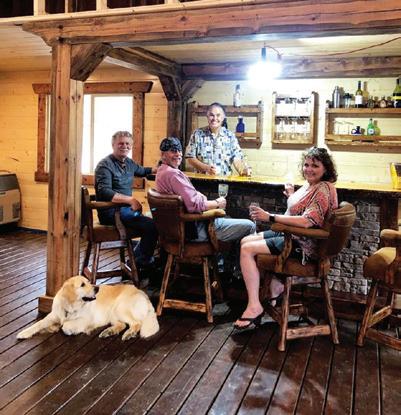


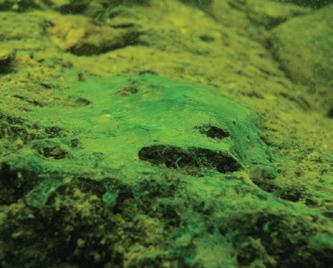


BY BARRY CORBETT
If ever there was a “high needs fish”, it is the lake trout. They are particular about where they spawn and especially fussy where they live.
In the Kenora area, lake trout spawn early to mid-October with diminishing light and water temperature. Spawning occurs over clean broken rocks or cobble on shorelines or shoals exposed to wave action. Fertilized eggs are broadcast over rocks falling between cracks called interstitial spaces. These spaces provide protection from predators but must be clean of sediment and debris or the eggs will suffocate. Larvae grow slowly during winter hatching in late February or March, remaining in the rocks for an additional few weeks living off their yolk sac until their fins fully develop.
Lake trout are found only in deep, cold, oxygen rich waters that are nutrient poor (oligotrophic lakes). They are the aquatic equivalent to “the canary in the coal mine” and are extremely vulnerable to water quality changes and overfishing. If their numbers decrease, it usually can be attributed to one or both stressors.
From 1984 to 1987, the Ministry of Natural Resources (MNR) conducted studies in the north end of Lake of the Woods where lake trout reside—Clearwater Bay, Echo Bay and Cul de
Sac. These included assessments of harvest, water quality and spawning habitat. Findings revealed lake trout were being over harvested during the winter fishery; reduced oxygen levels; and higher than normal nutrient levels in Clearwater and Echo Bays. It was suggested changes in water quality were caused by run off from septic fields, lawns and gardens.
To protect and rehabilitate the existing lake trout population and water quality, the Restricted Area Order (RAO) and angling regulations were implemented in 1988. The intent of the order is to ensure additional development on private lands will not negatively impact water quality and lake trout habitat. Angling regulations included closing the winter fishery; restricting the harvest to a maximum of 110 trout; and gear restrictions.
For the next 10 years, in what I like to call the “golden age of RAO monitoring”, numerous studies were conducted. These included MNR’s standard assessment of water quality and fisheries but also involved volunteers in citizen science projects.
High school students played an integral part in the Spring Littoral Index Netting (SLIN) projects (1995, 1996, 1997, 2001). Small mesh nets were set in the spring for brief time periods capturing trout by their teeth. Once sampled for length, weight, age and tagged, all trout were released unharmed. The most innovative program recruited volunteer scuba divers to identify, map and assess lake trout spawning habitat. These underwater surveys (1994, 1995, 1996, 2001) are the largest of their type ever
Photos L-R: 1. A benthic blue green algae band was found at 6-7 metres and extends into the shallows in front of some cottages; 2. Lake trout spawn in Gordon Lake; 3. Degraded spawning habitat is caused by docks blocking the cleansing effect of wave action. Compare to the clean rock of typical spawning habitats shown to the right; 4. This is a typical spawning habitat in Clearwater Bay. Note the clean rocks as opposed to the image on the left; 5. Lake trout eggs are exposed after a diver lifted rocks that were covering them; 6. Diver assesses spawning substrate Clearwater Bay.


conducted in North America. Up to 60 divers with over 60 surface support personnel were involved.
In 2001, MNR met with various stakeholders to review the results of past monitoring programs; identify future work directions; and identify volunteer partnership opportunities. Water quality results from 1980, 1994 and 1997 showed considerable variability, confirming the need for greater frequency of monitoring. Total dissolved solids, nutrient levels and water transparency were atypical and outside the Provincial average for lake trout waters.
SLIN provided valuable insights regarding the status of lake trout in each of the basins. Compared to the Provincial summary of 84 lake trout lakes, Clearwater Bay and Cul de Sac trout populations were considered healthy and in good condition. Overall abundance was high with representation of both young and older year classes and mortality (20 per cent) was well below the maximum allowable mortality of 30 per cent. In contrast, the low abundance and erratic or missing year classes signalled concerns for the Echo Bay and Granite Lake populations. Although mortality was within an acceptable level, the populations were dominated by a small number of older adults and did not compare well to other lakes.
The recommendations were to hold the course in Clearwater Bay and Cul de Sac and continue monitoring water quality and populations. Increased monitoring of summer lake trout habitat (dissolved oxygen/temperature profiles) were recommended for Echo Bay and Granite Lake and possibly include Granite Lake in the tag or restricted harvest program.
The underwater surveys generated the most interest within the scientific community and some of the most valuable results. Traditionally scuba divers, particularly volunteer divers—like me—have seldom been used in freshwater assessments. The underwater surveys conducted in the RAO demonstrated the usefulness of this technique. Results of these surveys and a video “Beneath the Surface” were presented at the Second Lake Trout Symposium (Yellowknife, NWT) and the 138th American Fisheries Society Annual Meeting (Ottawa, Ontario).
Over 30 spawning locations were identified, mapped and assessed. Most eggs were found in depths ranging from 0.5–2 m on rocky wave-washed shorelines adjacent to deep water. The divers also discovered eggs in areas never documented before— narrow ledges adjacent to vertical cliffs e.g. McCallum Point. The underwater surveys confirmed shoreline alterations and developments (docks, boathouses, etc.) negatively impacted lake trout spawning habitat by directly covering spawning substrate or blocking the cleansing effect of wave action resulting in sediment and debris degrading the substrate.
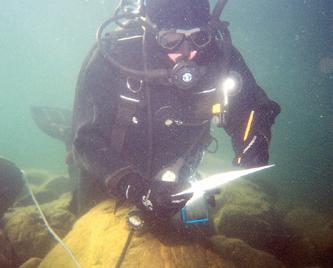
The most intriguing discovery was a band of benthic algae resembling “quiche” found at 6–7 m depth but occasionally extending into the shallows in front of some cottages. Analysis of the algae confirmed it was a blue-green algae dependent on an external source of nitrogen to exist. The nitrogen source was not confirmed, but septic leakage was highly suspected.
Fast forward to the present or 35 years post regulations. Are water quality and lake trout populations in the RAO better, the same or worse? Unfortunately, MNR and MOE were unable to provide a definitive answer. The MNR no longer conducts lake trout assessments in the RAO. Instead, they rely on lake wide monitoring of large-bodied fish communities in Lake of the Woods using the North American netting standard and Broadscale Monitoring as their primary assessment tools. Although effective in monitoring some fish communities, these techniques captured few lake trout and MNR was unable to comment on the present status of lake trout in RAO.
However, Kenora District MNR conducted spawning population assessments in Clearwater Bay, Echo Bay and Cul de Sac in 2021 and 2022. Their results indicated mature spawning trout up to 20 years, but a clear trend in population size was not apparent. No information regarding recruitment of young trout or status of spawning habitat was available.
Ministry of the Environment, Conservation and Parks (MOE) analyzed water quality samples taken by MNR in the RAO from 2003 to 2018, but this program has since been discontinued. The most important finding indicates no evidence of increased total phosphorous or chlorophyll A across the multiple bays sampled in the RAO. I was unable to determine if long term records of dissolved oxygen/temperature profiles are available for the RAO. This would provide critical information regarding the amount of summer lake trout habitat available within the RAO basins.
With no MNR or MOE programs dedicated to RAO waters, this may be the opportune time for citizen science to partner with these agencies and take the lead. For example, with a minimum amount of training and equipment, volunteers could monitor lake tout summer habitat (dissolves oxygen/temperature profiles).
Maybe a graduate student or two could be enticed to solve the mystery of the benthic algae band. They may be getting a “little long in the tooth,” but there is a crack team of volunteer divers ready to help. an
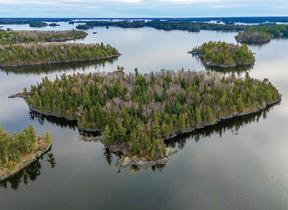

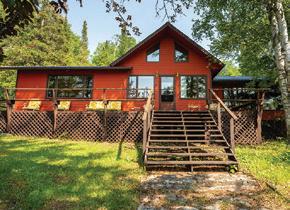




BY PHIL BURKE
“Sometimes the March Lion arrives early— other times it eats the lamb.”
—Grandma Woltz
My partner Chip (the dog) and I took a late March walk to a nearby snow-blanketed marsh on the western region of Rabbit Lake. The sun blessed a -10°C day with no wind; it was late-winter perfection. Chip was dressed in his little blue parka to prevent snow from clumping on his curly, poorly insulated, not-meantfor-Kenora winter coat. We clambered over the tired snowbank beside the road and entered the forest, which no human or snowmachine had sullied over the past few weeks.
The snow was threatening my shins and almost reached the dog’s back who wisely decided it was best to wallow in my footsteps. Although visible animal life was sparse, we were not alone. There were sufficient mystery tracks to pique our curiosity about what was under the snow.
The winter forest on such a day is clean, bright, and surprisingly uncluttered. Snow lies along horizontal branches and on sprigs of conifer needles. The trunks of naked deciduous trees readily indicate the direction of the most recent heavy snowfall. Lichens and mosses grow on the trunks of trees but not necessarily on the north side. Deer welcome mosses and lichens (particularly old man’s beard) and, during the hunger moon of winter, will seek this as a rewarding food source.
Some of the tree trunks had a definite browse line where deer had cleared the lower few metres. Our path was blocked by a blow-down whereby a tree was uprooted because of a combination of factors: heavy snow, wind, shallow soil, and tree mortality. This slender giant measured 25 metres in length and became hung up on surrounding trees and shrubs, making the trail impassible to any motorized transportation. As it was, the dog had no trouble whereas I was pleased that this was the only such problem we encountered.
Finally, we reached the marsh, and a beautiful vista welcomed us. The area is surrounded by great forested hills of granite. To the left, the lake lay under a blanket of glittering snow crisscrossed with snowmachine tracks. Ahead lay the marsh, a narrowing of the spring-fed lake where the water drains into a small creek. Spikes of last year’s cattails emerged from the ice and snow while the edges of the marsh were populated with reeds, sedges, rushes, and numerous other wetland plants.
A few snowmachine trails ventured into the marsh and thus our drudgery was at an end. Walking became a pleasure again and once more the dog was able to run and cavort with the energy and spirit of young doghood. I no longer run nor cavort but that does not mean my spirit was not willing.
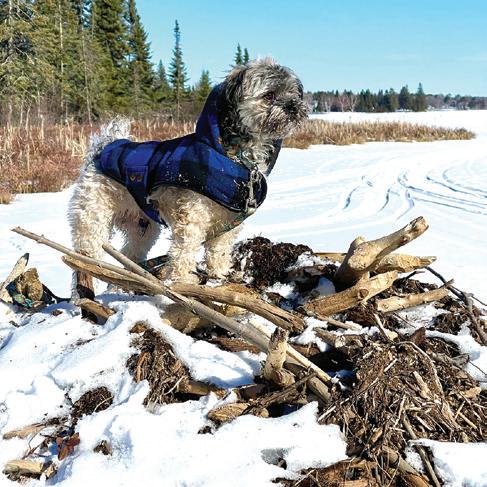
The cattails were worn, torn, broken and weary, their seed pods brown and fluffing. The leaves and stalks were a light tan colour and rattled and scraped against each other as we pushed our way through. Alas, these sad-looking wetland plants are the bane of open marshland because they spread so tightly and vigorously, effectively ridding the marsh of many competitive plants and in time turning the wetland to dry land.
It was also hard to believe that this is the same marshland that was alive with so much variety of life forms last summer when dragonflies were swooping for mayflies, bass streaked through the shallow water, and painted turtles and frogs tumbled and leaped from the rocky shoreline into the safety of deeper water. Here, water lilies floated among huge green leaves, muskrats performed their duties, and ducks and geese raised their families. Loons yodelled and beavers slapped tails when we interrupted work on their lodge and dam.
A winter marsh and a summer marsh are two different worlds and maybe add a third: the world below the ice.
We are grateful for winter-faithful birds and by late March, some eagles, owls, ravens, and Canada jays are already nesting. Above the trickle of water over the beaver dam, we hear the chirping of finches, the familiar voice of the chickadee, the ‘yank’ of the red breasted nuthatch, and the heavy hammering of a pileated woodpecker.
This year, March 20 marks the official arrival of spring, what we like to refer to as Calendar Spring. As all residents are aware, our Lake of the Woods area can be very fickle about the arrival of our true spring. Sometimes we don’t see spring until well into April and on rare occasions it hits us before the calendar date.
Among the great benefits of March is this one: we don’t have to fight off biting-insects. an
BY JENNIE WANG, COMMUNICATIONS ASSISTANT, IISD EXPERIMENTAL LAKES AREA
You may have heard that the past few years have been marked by a little-known phenomenon called COVID-19. Collectively, we discovered just how quickly we could adapt to new cleaning habits when given a good enough reason.
But the question remains: what are the effects of our zealous spraying, scrubbing, and wiping on the environment—and on our freshwater supplies?
Here at IISD Experimental Lakes Area—the world’s freshwater laboratory located right here in Lake of the Woods, east of Kenora—scientists are undertaking a large collaborative study to investigate the impact of a commonly used class of chemicals in disinfectants called quaternary ammonium compounds (QACs) on fresh water.
QACs are a group of human-made cationic surfactants that contain a quaternary ammonium ion. Their chemical make-up allows them to disrupt the cell membranes of bacteria and lipid coats of viruses, making QACs an excellent antimicrobial disinfectant.

Examples of QAC-based disinfectants include hand sanitizer, cleaning sprays, surface wipes, and pretty much any product adorned with the words “kills 99.9% of germs.” QACs are also used in goods such as fabric softeners, hair care products, and air fresheners. Another good tell that a product contains QACs is when the ingredient list features chemicals ending in “ammonium chloride.”
Even before the pandemic, QACs were classified as a highconsumption chemical with an annual usage of around 500,000 tons.
So, how do QACs get from wipes into freshwater systems? The answer is down the drain and into wastewater.
Treatment systems typically remove the majority of QAC from wastewater, but every year around 25% of QACs consumed are discharged into the environment. For instance, significant concentrations of QACs can be found in rivers and lakes that are downstream from facilities such as hospitals, where disinfectants are frequently used in large quantities and may overwhelm treatment facilities.
Even though QACs are widely used, not much is known about their effects on fresh water and its inhabiting organisms.

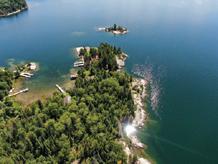




Though we know that the chemical composition of QACs makes them great at disinfecting, we still don’t fully understand the extent of harm they pose to algae, bottom-dwelling invertebrates, fish, and even mammals that reside in rivers and lakes.
Well, as part of a four-year whole ecosystem experiment, scientists at IISDELA are working in mesocosms—a kind of enclosure within a lake—to look at the impact of a specific class of QACs called alkyl dimethyl benzyl ammonium chloride (or ADBAC to their friends).
We are looking at many different factors, like how ADBACs interact with species of the lower trophic levels of the food



web and how they move through the water column and sediment. Biota—the plants and animals of the region—are also an area of investigation.
Additionally, concerns about the widespread use of QACs and microorganisms developing resistance are being addressed with help from two universities in Scotland that are studying the evolution of antimicrobial resistance.
The pandemic is an example of how difficult it can be to balance our immediate needs with the possible long-term consequences of the future. The work being done down the road at IISD Experimental Lakes Area on QACs is helping to contribute to

a richer understanding of the human impact on fresh water. In doing so, policymakers, industries, and many others will be more equipped to make better and more informed decisions going forward.
For instance, this could mean changes to the way that the cleaning product industry formulates its sanitizers. Additionally, wastewater treatment plants could adapt their processes to reduce the amount of QACs released into freshwater systems.
And overall, this research on QACs can and in policies, guidelines and behaviours—both big and small—that will reduce the mark they leave on our environment.



Put a plan in place. Ensure there's enough science and management expertise. Coordinate actions bi-nationally. That’s our mission.
BY TEIKA NEWTON, EXECUTIVE DIRECTOR
The Lake of the Woods Water Sustainability Foundation (LOWWSF) kicked off 2025 with a number of big announcements including personnel changes and the launch of a new, multi-year project supported by the Canada Water Agency’s Freshwater Ecosystem Initiative.
After 20 years at the helm, our Foundation’s founding Executive Director, Todd Sellers, retired at the end of 2024. Todd has not gone far, though, as he joined our Board of Directors to provide ongoing guidance to our work—a boon for all of us, as Todd holds rich expertise, spanning decades of water quality work for the Lake of the Woods watershed. Teika Newton is our new Executive Director, and Meghan Mills has joined the team as the new International Watershed Coordinator.
Teika will be familiar to Area News readers, as she has served as the International Watershed Coordinator over the past two years. She is also a long-time participant in regional watershed science, policy, and governance activities. Since 2013, Teika has been involved with the International Joint Commission’s International Rainy–Lake of the Woods Watershed Board, participating in the Board’s Community Advisory Group (CAG) and, from 2016-2020, as a board member, Canadian co-chair of the CAG, Engagement Committee, and the Adaptive Management Committee. Teika also has been helping to guide the IJC Board’s work on climate adaptation since 2016.
Over the past two years, Teika shepherded a complex project through the International Joint Commission, engaging international agencies and partners working on water quality issues in the Rainy River and Lake of the Woods basins to propose international water quality objectives and adopt alert levels through the regional IJC watershed board for nutrients and contaminants of concern. She continues to work with these partners to develop a long-term, shared, international monitoring, assessment and reporting program to ensure these water quality goals are achieved and maintained.
Teika lives in Treaty #3 Territory, just outside Kenora, Ontario with her husband, Mike, their son Sam and daughter Maya, and assorted dogs, cats and wild forest friends. When she’s not outside skiing, hiking, gardening, swimming or paddling, she can be reached at teikanewton@lowwsf.com.
Meg Mills has joined the LOWWSF team, taking on the International Watershed Coordinator role. Meg is thrilled to work
alongside others dedicated to protecting our shared waters. She lives on Treaty #1 Territory in Winnipeg, Manitoba, and cherishes time spent off-grid at Pelicanpouch Lake, located on Treaty #3 Territory near Minaki, Ontario.


Meg is currently completing her Master of Natural Resources Management at the University of Manitoba, with a focus on researching meaningful public participation and community engagement in resource management through a co-governance lens. Her background includes diverse environmental projects that blend science and storytelling. She has done community-based monitoring and project coordination work, equipping her with strong technical and communication skills. Continually learning the complexities of water governance, she is deeply committed to relationship-building and meaningful collaboration with diverse groups through empathic approaches to achieve impactful outcomes.
In her free time, Meg enjoys backcountry canoe trips in the summer (a humbling reminder of coexisting with natures quirks, including bugs), cross-country skiing during the long, dark prairie winters, and exploring different art mediums, most recently, needle felting (it’s surprisingly cathartic to repeatedly poke wool with a sharp needle!). Meg looks forward to meeting and working alongside the LOWWSF community, and we are excited to welcome her. Meg can be reached at meghanmills@lowwsf.com.
This transition is happening at an exciting moment in the history of our Foundation, as we celebrate our 20th anniversary in 2025 and move forward into a new era of collaborative sustainability planning for the Lake of the Woods region. an
BY TEIKA NEWTON, EXECUTIVE DIRECTOR
20 years ago, in 2005, the Lake of the Woods Water Sustainability Foundation (LOWWSF) began convening citizens, municipalities, Indigenous nations and state, provincial and federal governments in Canada and the United States to amass the scientific, technical and community knowledge needed to inform an international water quality plan while building the trust and capacity to implement it. With the support of people in our watershed, we called for an International Joint Commission (IJC) mandate for Lake of the Woods, and in 2013, governments directed the IJC to establish the International Rainy-Lake of the Woods Watershed Board (IRLWWB).
Since our inception—and indeed, long before that—algae blooms, driven by excessive nutrient (phosphorus) loading, have been a consistent water quality concern facing Lake of the Woods. Then, as today, algae blooms were becoming more frequent, toxic and lasting later in the year.
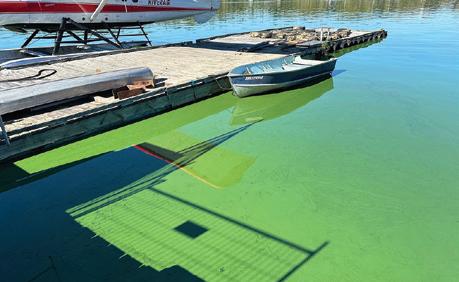
After two decades of building the scientific and policy-making base to support long-term water quality sustainability for Lake of the Woods, we are finally at an important inflection point in 2025. In 2024, the IRLWWB adopted water quality alert levels that reflect long-term nutrient reduction goals, and shared these with the IJC as recommendations to guide development of international water quality objectives. Meanwhile, Minnesota is implementing its remediation plan for the lake.
In the coming year, the Foundation is moving forward a key action to address the algae problem. We will be working with local communities, knowledge keepers, stakeholders and experts in

Map of the proposed study area for LOWWSF’s Canadian domestic phosphorus management plan development project. The four hatched areas denote Rainy-Lake of the Woods Canadian subbasins where management interventions could potentially be applied to limit nutrient loading to the Rainy River and Lake of the Woods. The heavy grey line is the international boundary between Canada and the United States, and the total Rainy-Lake of the Woods watershed is contained within the fine black contour line. Map from Framework for a Domestic Phosphorus Management Plan For the Rainy River and Lake of the Woods (June 2022, LOWWSF).
the Canadian portions of Rainy River and the Lake of the Woods to develop a domestic phosphorus management plan that will, like the Minnesota plan, support international water quality goals.
Since the early 2000s, scientists and government agencies at all levels in both Canada and the United States have worked to help us better understand the problem of algae and nutrient impairment on Lake of the Woods. Since the late 1980s, the Minnesota Pollution Control Agency has been tracing phosphorus movement from the Rainy River, the largest tributary to the lake, through to the lake, where excess phosphorus fuels algae blooms. In 2008, the US Environmental Protection Agency (EPA) declared Lake of the Woods in exceedance of federal eutrophication criteria, which triggered the state to conduct a Total Maximum Daily Load (TMDL) study of excess nutrients in Lake of the Woods. In 2021, Minnesota published its final TMDL study report, following ten years of intensive research, documenting sources and movements of phosphorus through the system. The TMDL report provides a detailed plan to guide Minnesota’s watershed restoration for the coming decades.
On the Canadian side of the watershed, between 2016-2020, the Government of Canada invested in binational studies of algae and nutrients in Lake of the Woods. Canada also established a water quality monitoring program through Environment and Climate Change Canada that continues to do annual surveys of Lake of the Woods each fall and year-round monthly river water sampling for both Rainy River and the Winnipeg River, often working in parallel with colleagues in Minnesota to ensure maximum coverage and comparability of data collected.
Indigenous agencies, including Grand Council Treaty #3 in Canada and Red Lake Nation in Minnesota, working in cooperation with the US EPA and the Science Museum of Minnesota, also have water quality monitoring programs throughout the basin. Other government agencies at the provincial and state level, as well as citizen scientists, also contribute to our body of water quality data.
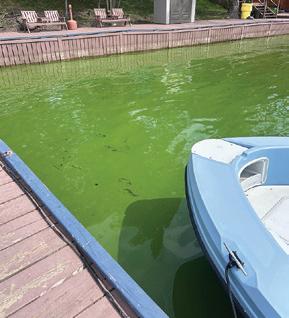
With so many agencies and partners active in the basin, LOWWSF plays a crucial role in supporting and often coordinating interagency collaboration. LOWWSF convenes the International MultiAgency Arrangement (IMA), where water resources managers and technicians meet and share information, collaborate, and identify the resources needed to do the work that protects our water quality. In this way, agency partners fulfill their respective unique mandates, while data, information and program outputs can be leveraged and accessed to achieve goals shared among agencies and across borders.
The IRLWWB’s 2024 water quality alert levels and recommendations for water quality objectives, focused largely on phosphorus reductions, reflect the consensus among dozens of agencies, organizations and groups that work on Lake of the Woods water quality. These shared goals aim to sufficiently reduce Lake of the Woods phosphorus loads and concentrations over the next 20 years to decrease harmful algae blooms. In the meantime, IMA partners are collaborating on a long-term, shared, international monitoring, assessment and reporting program to track progress and address any water quality exceedances that may arise.

LOWWSF’s work over the next couple of years will be focused on developing a Canadian domestic phosphorus management plan. The work is supported through the Canada Water Agency’s Freshwater Ecosystem Initiative for Lake of the Woods.
For this project, our task involves establishing a network of interested parties to support this planning work that will include developing a framework to monitor and review progress toward achieving desired phosphorus-reduction outcomes for Lake of the Woods. We anticipate this framework will support the IRLWWB’s alert levels for nutrients and algae, as well as any related future international water quality objectives.
The project steering committee launched in January 2025 and there will soon be two project working groups, as well as an Indigenous engagement committee. One group will examine point sources—permitted wastewater facilities—and their task will be to assess whether and where load reductions might be achieved from permitted facilities. The other group will look at non-point sources—the nutrients that flow from the landscape and may be related to agriculture, forestry, mining, development, and other land-use changes, as well as natural sources including erosion, sediment transfer and airborne sources. That group will help to identify areas that can be targeted for phosphorus abatement, as well as strategies to do so.
Anyone wishing to learn more about the project or get involved can contact Teika or Meg at LOWWSF. Watch for project updates throughout the year in future issues of Area News. an
















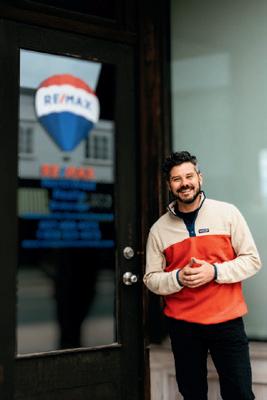





















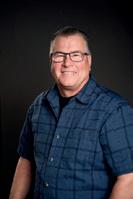












BY JACOB BOUTWELL
Welcome to Rooted Reflections. In this new column, Jacob Boutwell is going to take us on a journey to see how each of us of every age can live and play more sustainably. In addition to growing up in the Lake of the Woods region, Jacob draws on years spent travelling and learning about agriculture, activism, and environmentalism. He eventually returned home to apply what he learned by co-founding the non-profit, Harvest Kenora, and the vegetable farm, Muriel Shores Farm.
Spring is starting to peek out from under its winter covers. I love the month of March. There is often a lot of sun by then, and the lengthening days help me to believe that summer will, in fact, come again.
Living life in the Lake of the Woods area is a seasonal lifestyle, and this feels especially true in my vocation as a farmer. March is the month that we begin to start our seedlings, and seeing the tender green shoots poke their way out of the soil is a balm for our souls. We start our seedlings on our farm for economical reasons of course, and because we enjoy it, but it also brings us into a deeper relationship with the plants we grow and the food we eat. If you’re a gardener (or even if you aren’t one yet) I encourage you to give seed starting a try.
When it comes to working with plants, a lot of people tell me that they don’t have a “green thumb”. I usually respond by saying, “All you have to do is care about the plants.” If you care about the plants and consider what they are needing in life, you’ll be alright. Plants aren’t all that different from humans when it comes to needs; we just get those needs met in different ways. Plants need food (nutrient rich soil, light), housing (soil with a loose structure that isn’t too wet or too dry, not too crowded with other plants), and water. Now, the jury’s out on whether plants need love to thrive. In my experience, it helps, so throw a little affection their way.
Plants have an immune system, just like us. When they are stressed, their immune system doesn’t function as well, leaving them susceptible to pests and disease. A healthy thriving seedling is key to a healthy thriving plant that can resist pests and disease and ultimately, yield a nutritious bounty. A seedling being transplanted is potentially one of the most stressful events of an annual plant's life, so we want to be sure that they are robust and healthy to make that transition.
I want to share with you some general tips that we use in our system that give us the healthiest possible seedling.

The soil mix for seedlings should have a high capacity to hold water and a rich and balanced nutrient profile. This is the recipe we use to achieve this:
• 50 parts high absorbent potting soil
• 30 parts quality screened compost
• 0.5 parts naturally derived all-purpose powdered fertilizer
Different plants prefer different temperatures and humidities, depending on the environment they are native to. Ideally, you will have seedlings in an area that you can control the temperature and humidity. We choose 20°C and 60–70 per cent humidity for our seedling room. When germinating seeds, it's best to keep them covered so they don’t dry out. You should aim to keep the soil about the consistency of a wrung-out sponge all throughout the seedlings.
In most cases, even a south facing window will not provide enough natural light for a seedling in the months that seed starting takes place. A greenhouse that has sun exposure for most of the day will work, or you can use grow lights. We use grow lights in our seedling room (we leave them on for 16 hours a day, on a timer) and then transfer mature seedlings to our greenhouse.
Like most elements of growing food, starting plants from seed is an art form as well as a science, and there are many small details that go into nurturing a healthy seedling. My best advice is to experiment and find joy in the process. We are always trying new things and always failing (aka learning).
Starting from seed connects us more to the plants we cultivate and gives gardeners of any age or experience level the opportunity to grow in their gardening journey.
There is so much more to seed starting then what I’ve covered in this article. I encourage you to continue your learning and if you’d like to volunteer at Muriel Shores Farm to learn more about how we do it, please contact us. an
BY SUNI HABERLAND, CLEARWATER BAY
Of course, most of the gatherings on the lake revolve around food, but nothing sticks out as a family recipe at the lake like cookies.
As a kid, my mom was never able to spend as much time at the lake as my dad and me because of a demanding job. However, my grandparents were already retired, so I was able to spend lots of time with grandma and grandpa. I can remember making gingerbread boys with Grandma in the kitchen with red hots for the buttons, my dad’s favourite.

2 1/2 cups flour
1 tsp ground ginger
3/4 tsp cinnamon
1/4 tsp allspice 1/4 tsp salt
1/2 tsp baking soda
2 sticks butter, room temp
1/3 cup molasses
1/3 cup sifted sugar red hots
Instructions
Preheat oven to 375°F. Roll the dough, lightly floured to about 1/8 inch thickness. Cut out shapes—we always used a gingerbread boy. Bake 12-15 minutes. Immediately use three red hots for the buttons before the gingerbread cookies cool.


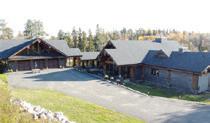

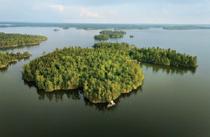
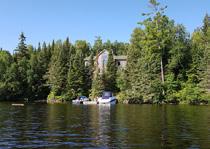




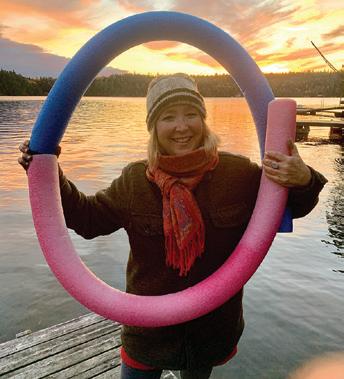
ARTICLE AND PHOTOS BY SHARON GURNEY
Did you know that in 2021, The Province of Ontario passed Bill 228, Keeping Polystyrene Out of Ontario's Lakes and Rivers Act? This Act was passed to apply to:
1. Sale of foam docks: A person who sells or offers to sell a floating dock, floating platform or buoy shall ensure that any expanded or extruded polystyrene in the dock, platform or buoy is fully encapsulated.
2. Construction of foam docks: A person who constructs or reconstructs a floating dock, floating platform or buoy shall ensure that any expanded or extruded polystyrene in the dock, platform or buoy is fully encapsulated.
How often have you seen a piece of deteriorated plastic foam washed up along your shoreline? Not only is it unsightly, but it can also be harmful to our lakes. Over time, this plastic foam will break down due to exposure to natural elements like sunlight. The disintegrated products can vary in size from small pieces that fish and other aquatic organisms mistake as food, to microscopic microplastics that can be incidentally consumed by wildlife, aquatic life, and perhaps by cottagers who consume water from the lake.
Microplastics can be as small as a nanometer, which is much smaller than the 1.0-micron filters many of us use to treat lake water.
Polystyrene is a type of plastic made from petroleum. STYROFOAM (a registered trademark of DuPont) is a brand of expanded polystyrene foam that is commonly used for insulation, packaging and some cottage products. STYROFOAM is used widely, including for construction insulation, but it is also used to float objects like docks, and buoys. Most often the word "Styrofoam" is generically used to describe expanded polystyrene foam products like disposable coffee cups, coolers and other foam packaging materials, none of which are actually STYROFOAM (Source: universalconstructionfoam.com).
Polystyrene and polyethylene are some of the most commonly used plastics. Both are lightweight, and available in many different forms, making them widely used. For example, the pool noodles we all love to use at the lake are made of polyethylene. All of these, and other foam products, can shed microplastics.
floats; 2. Foam water toys clearly beyond their best before date and showing signs of deterioration need to be replaced; 3. Pool noodles and other foam water toys can shed harmful microplastics into the lake when they deteriorate.
According to the Centre for Environmental Health, styrene (a breakdown product of polystyrene) is carcinogenic and can disrupt human hormones.
• Survey your shoreline structures to see if unencapsulated (exposed) foam products, such as dock floats, are being exposed to water. If they look worn and deteriorating, plan to replace these floats with encapsulated products. Although less buoyant, air-filled floats may also be an option you want to explore. Replacement of exposed foam floats can be costly, but it is important to protect the lake water quality and the aquatic life and wildlife we all cherish.
• Unfortunately, polystyrene/STYROFOAM can’t be recycled at the Winnipeg or Kenora recycling centres. Neither can it be reused once it deteriorates. Sadly, once landfilled, it will take hundreds or thousands of years to decompose, so limit your purchase when possible, and look for safer alternatives.
• Inspect foam products, equipment and toys you might have stored in your shed or boathouse. From personal experience, many of my older pool noodles have seen better days, and I will be looking for alternatives and replacement before they shed any more microplastics into the lake.
• If you see pieces of foam floating in the lake, take the time to pick them up and dispose of the waste away from the lake.
Many traditional beach and lake toys typically don’t last long, as they’re not built to last. They can crack, chip and tear after being exposed to waves, sun, rocks and sand. Many are made of a form of plastics and as discussed earlier, when they break down these can turn into harmful microplastics.
Look for products made from more sustainable, eco-friendly materials, like natural rubber, bamboo, wood, or food-grade silicone as examples.
Unfortunately, there doesn’t seem to be many options to replace products like pool noodles. Therefore, if you decide to hang on to these water toys, make sure to replace them when they start to deteriorate.
These are a few steps we can take to tread a little more wisely in lake country. an






By Jacob Rodenburg and Drew Monkman
Spring is a special time to observe frogs, toads, and salamanders as they emerge from winter dormancy and prepare to breed. Their chorus of calls fills the evening air, creating an enchanting symphony that celebrates the arrival of warmer spring weather. With a little preparation, patience, and a sense of adventure, you can witness one of nature’s most fascinating seasonal events.
• rubber boots (for wading through wet areas)
• a strong flashlight (to help spot frogs and salamanders)
• a camera or smartphone (to document your discoveries)
• a sound recorder (optional, but useful for identifying calls)
• an amphibian field guide or app (such as "Audubon Reptiles and Amphibians" or amphibiaweb.org
• a notebook and pencil for recording observations
• a small, clear container (for briefly observing tadpoles or salamanders before releasing them)
The first warm, rainy nights of spring are ideal for amphibianwatching. Frogs and toads usually start calling when night-time temperatures reach at least 8°C. Their calls are loudest at dusk and during the first few hours of darkness. Windless, damp evenings following rain offer the best chances of hearing a full chorus. These are also the conditions when salamanders migrate to breeding sites, often traveling across roads near woodlands and wetlands.
1. Arrive before dark: Get to the wetland just before sunset to familiarize yourself with the area and listen to the sounds of nature transitioning from day to night.
2. Listen for calls: Before searching, take a moment to enjoy the chorus of frogs and toads. Try to identify different species by their distinct calls using a field guide or app.
3. Approach slowly and quietly: As you move toward the sound, the frogs will likely stop calling. Find a spot to sit quietly. Soon they will start up again.
4. Use your flashlight: Once calls resume, scan the water and surrounding vegetation. Look for the reflective shine of amphibian eyes or the movement of vocal sacs inflating as they call.
5. Take photos and observe: If you spot a frog or toad, observe its size, colouration, and behaviour. Photograph it using a flashlight for extra illumination if needed.
6. Search for egg masses and tadpoles: During the day, return to the same wetland to look for jelly-like frog eggs or clusters of toad eggs in long strands. As the season progresses, watch for tadpoles developing in the water.

1. Search woodland roads: On warm, rainy nights, slowly drive or walk along back roads near swamps or flooded ditches, keeping an eye out for salamanders crossing.
2. Walk and observe: Once you find a good spot, walk carefully along the roadside. Shine your flashlight on wet areas and pools.
3. Look for mating behaviours: Some salamanders, like spotted salamanders, perform an underwater courtship dance called “congressing” as they sway, swim and wiggle. If you're lucky, you might witness this incredible event.
4. Check under logs and rocks: During the day, explore damp wooded areas by carefully flipping over logs or rocks to find hidden salamanders. Be sure to gently return the objects to their original position.

Frogs, toads, and salamanders are important indicators of ecosystem health. Their permeable skin makes them sensitive to pollution, habitat changes, and climate shifts. Observing and documenting them not only deepens our appreciation of nature but also contributes valuable data to conservation efforts.
Amphibians play an essential role in food webs, serving as both predators (eating insects and other invertebrates) and prey (for birds, snakes, and mammals). Their presence helps maintain ecological balance in wetlands and forests.
Amphibian-watching is a simple yet rewarding way to connect with nature. By taking the time to observe and appreciate these remarkable creatures, you help ensure that their voices continue to echo through the wetlands for generations to come.
1. Frog call and observation challenge
Before heading out, listen to recordings of different frog and toad calls. Challenge yourself or your group to identify as many species as possible in the wild. To learn more about which frogs are calling and the sounds they make go to: naturewatch.ca/ frogwatch/ontario If you find a frog in the daylight, take a photo with our phone and use iNaturalist or Seek (two free apps) to help you identify it.
2. Sound recording
Use your phone or a digital recorder to capture the nighttime chorus. Later, compare your recordings to online databases to verify species identification.
3. Nature journaling
Bring a notebook to sketch and describe the amphibians you find. Note their size, colors, and any interesting behaviours. You can also write about the environment—what’s the weather like? Are other animals present?
4. Mini Bioblitz
Turn your adventure into a mini Bioblitz by documenting all the wildlife you encounter. Use apps like "iNaturalist" to log your observations and contribute to Citizen Science.
5. Habitat exploration
Visit the wetland during the day to look for amphibian egg masses, tadpoles, or juvenile frogs. Observe how the habitat supports their life cycle.
6. Create an amphibian-friendly backyard
If you have space at home, consider building a small backyard pond to support frogs and other wildlife. A shallow pond with native plants can provide a breeding space and shelter for amphibians.
7. Amphibian-themed art and storytelling
Use your observations as inspiration to create amphibianthemed drawings, paintings, or short stories. Imagine what life is like for a tadpole transforming into a frog or a salamander on its nighttime journey.

If you want to support amphibian conservation, consider participating in “Snapshots in Time,” a Citizen Science project that tracks the timing of spotted salamander and wood frog breeding. This long-term study helps researchers understand how climate change affects amphibian reproduction. Learn more at oriannesociety.org. To find out more about citizen science projects in Ontario go to: ontarionature.org/programs/community-science
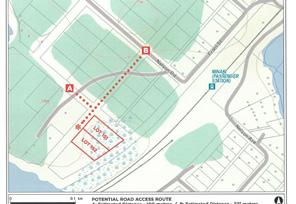
Two vacant treed lots located in the Minaki townsite, one 0.76 of an acre and one 0.84 of an acre. Located near marinas for boat docking. Road access would need to be developed.
$20,000 each
Greg Kirby, Re/Max First Choice Realty Ltd 807-466-8266 / gregkirby.ca

Lilypad Bay, LOTW NEW
150ft of shoreline w/ stunning eastern views; 3400 s.f. over 3 levels, 5 BR, 3 baths, expansive windows, towering pine vaulted ceiling; large kitchen, granite countertop; master bedroom w/ 4-pc ensuite; waterfront deck & floating dock.
$879,000
Carmichael Real Estate Inc. 807-466-2236 / lakeofthewoods.net

4 Whiskey Jack Way
Custom four-bedroom lakefront home with premium finishes, a walkout rec room, a historic guest cottage, and a deep-water dock—just 15 minutes by boat from Kenora.
$1,569,000
Century 21 Northern Choice Realty Ltd.
Independently Owned & Operated – Brokerage 807-468-3747 / century21kenora.com
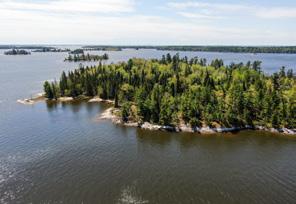
Island Building Lot
Rare island building lot just north-west of Morson on Lake of the Woods. 2.46 acres with 676 ft. of shoreline. Map available on our website.
$199,000
Northwoods Realty
807-226-1024 / northwoodsrealtyltd.com
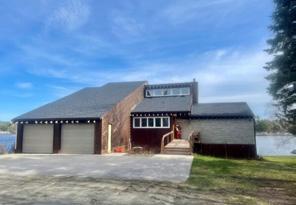
Peterson Drive, Winnipeg River
LIVE "THE LIFE" ON THE RIVER!
3800+ sq. ft. 6 bedroom, 3 1/2 bath year-round waterfront home/cottage w built in double garage, extensive dock system. Low profile 5-ac lot w approx. 790 fr. of south facing waterfrontage!
$995,000
Shelley Torrie Home & Cottage Realty 807-547-4020 / kenora-realestate.com
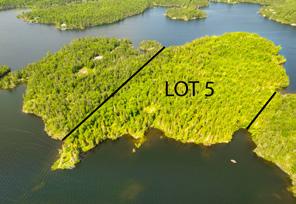
5 Rogers Island
Build here and live the island life. Trails through out the island allow you to walk and feel all the visceral aspects of nature. Close proximity to Kenora offers the convenience of a short boat ride but allows you to truly escape upon your arrival!
$1,800,000
Cabin Country Realty 807-468-3541 / cabincountry.com

Unit 302 - 471 Lakeview Drive
Lakeview condo—2 beds, 1 bath, 1096 sq ft, furnished, ready now. Includes parking, storage, new furnace/AC, upgraded appliances, and walk-in shower. Recent window/siding updates. Contact Phil Hanstead 807-467-7445.
$450,000
RE/MAX NorthWest Realty Brokerage 807-468-4573 / remaxnorthwestrealty.com

6 Rogers Island
If privacy and acreage is high on your list, you must consider Rogers Island. This property has frontage on the North and South sides which offers unique build sites depending on preferences of exposure and shelter.
$1,500,000
Cabin Country Realty 807-468-3541 / cabincountry.com

543 Lakeview Drive, LOTW
Prime highway commercial waterfront opportunity, ideal for hotel development. Preliminary design plans available, existing docking revenue. Other business uses permitted.
$2,495,000
Joey Katz, RE/MAX NorthWest Realty Brokerage 807-466-2770 / remaxnorthwestrealty.com
How to submit Classifieds
Email membership@lowdsa.com or mail LOWDSA, Box 1160, Kenora, ON P9N 3X7
Next submission deadline: April 4, 2025
Please try to keep your listing to 35 words or less.
Cottage rental less than 10 min by boat from Kenora. Spacious and comfortable cottage overlooking The Tangle with beautiful views and a large shady deck, with sunny deck at the dock. 5 bedrooms and 1 bathroom, sleeps 11. Large kitchen, 2 fridges, hydro and septic. $2500 a week. Available June 1-July 13 and Aug 24- Sept 7. For more info and photos email lotwsunsets@gmail.com
Lakefront Cottage on Lake of the Woods (Storm Bay Road), near Kenora, road access. Includes 3 bedrooms, full kitchen, bath, and laundry. 2 acres, private bay, sandy beach, floating dock, and good fishing! Available June, July, August, September. $3,000/ week. Please text: 204-951-5812.
LOW Storm Bay Rd. 9 Large house with 9 bdrms, hot tub, multi-level decks, granite kitchen, boathouse, sauna, WiFi, fireplace, washer & dryer, dishwasher. Kayak & boat are a possibility. $2500-$8500 per week. Discounts available in the fall. mail@markmcgregor.ch
Brule Point lakefront 3 bedroom cabin, LOW. Fantastic fishing area, quiet bay, two docking facilities with plug, private beach, fully stocked including freezer, large deck. Cabin sleeps 5, single bathroom/shower. Boat access only. 2024 rate $1390/week. Contact donna@taketwoinc.com.
Lakefront - Trout Lake 20km North of Kenora. 3 bdrm Cabin available for rent weekends or weekly May-June and Sept. Full kitchen & bathrm, BBQ on deck. SAT TV/DVD. Comes with canoe, kayaks & 12 ft. alum. boat. Private deck on the shore and your own sand beach. Spring-fed-lake with crystal clear water.
Lakefront Cottage for Rent - Locke Bay. Road access 15 minutes North West of Kenora. Built in 2017 with 2 bedrooms and 1 bathroom. South exposure with private dock. Fully furnished. Includes Satellite TV, Internet, A/C,
BBQ and fire pit. Would prefer a seasonal rental May - Sep $22,000 or $2000 week (2 week min). Email kenoracottage@hotmail. com for more info.
Cottage for Sale – Clearwater Bay. 3 bed, 2 1/2 bath, 1400+ sq. ft. seasonal cottage w crib dock & wired boathouse on LOTW, Inglis Road – 1.346 acres w approx.102.7 ft. of south facing waterfrontage. $2,000,000. Call 807.407.6992.
Camp/Estate For Sale on LOTW. Located on a peninsula 7 miles south of Sioux Narrows. It is like an island, except you can drive to it. Everything is new or nearly new condition. Could be a camp but would be PERFECT as a Family Estate or Corporate Retreat. Asking price $3 million or best offer. Owner will finance. Text 218-3102200 for photos & more info.
We are long time LOTW cottagers who have just sold our water access cottage. We are looking for a road access rental cottage for 3-5 weeks, summer 2025. Prefer modern amenities, western side of the lake, at least 3 bedrooms. Send email to : lallen@judicom.ca
Part-Time, General Labourer. For help around the cottage and land, possibly 3 days a week. Location: Northern Harbour area at the end of Storm Bay Road. Contact E-mail: peterzaj@mymts.net.
17 foot aluminium canoe, good used condition. No leaks. Available May long weekend, or later. Pictures available. $1100.00 text 620-363-1122.
2 Steel Entry Doors , 2 Aluminium Storm Doors. C/w frames for sale: $35 each . Also 1 only vintage
Classified ads are a free service for LOWDSA members.
All classified ads are posted online at lowdsa.com. Note that they are posted within a couple days of submission and not subject to magazine deadlines.
Fuel Oil Space Heater: $170. I will supply photos when you email, peterzaj@mymts.net
Young Chang 6ft.10in. G208 semi concert grand piano in excellent condition. Enhance the sound and visual aesthetics of your home or cottage with this beautiful instrument. Asking price: $10,000. Call 807 407 5891.
“Find Your Voice.” One-on-one painting lessons designed to your interests. I have over forty years experience teaching all ages. Supplies are included. I teach traditional techniques and how to blend them. Contact, pippij69@ gmail.com.
Exquisite high-end antiques for sale. These include a 9-piece walnut dining set, ladies spinet desk, roll top desk and swivel chair, carved curio cabinet with two curved beveled glass doors and matching grandfather clock from Austria, walnut cabinet with beautiful hand-carved panels in the doors from Belgium, and Dresden candelabras. Excellent condition. Prices negotiable. Must be able to take away. For more information and pictures call or text 807-465-4555.
10x10 old log shed. 14" overhang. The bottom has some rot but if someone is interested in dismantling and moving it to a new foundation it would be a very cool garden shed or playhouse for kids. We'd just love to see it repurposed as it is pretty cool. Dismantling/PU at Trinity Bay (boat access only) Email mridgen@aptn.ca.
Boat Rail System, Morson area. Approx. 100 ft. long with carriage for 17’ to 20’ boat (more or less) complete with winch system powered by a solar panel with charging system not including battery. Asking $3750. jaslaw1@ shaw.ca.
Gently Used , Personal "SnowPlow." To fit front mount 2 inch receiver hitch on full-size SUV.
Please E-mail Peter at peterzaj@ mymts.net.
Snow Blower or Garden Tractor. Looking to buy a good condition, used, gas powered 30 inch or larger, with Snow-Thrower attachment and or Blade. Contact: peterzaj@ mymts.net
2022 Sea Ray SPX 190 Fibreglass Bow Rider. Only 49 hours. Excellent condition. Red body, tan interior, loaded. Indoor boathouse stored on lift, since new. 150 H.P. Outboard mercury 4-stroke engine. Shorelander trailer included. Fully winterized, serviced, wrapped and ready to use this spring. $53,900. For more information or photos, please email, text or call Greg 204-390-2121
20 hp Evinrude long shaft 2 stroke outboard motor. Incl hose and tank. Asking $500 Ted 204294-4891.
3hp Eska 2 stroke outboard motor. Asking $150 Ted 204-2944891.
1984 Tiara 31’ Lake CruiserLive aboard. Low-time Twin 350 Crusader engines, all new interior refresh with XM and loads of equipment. This ex-Great Lakes boat is ready to go. Contact at 204292-3970.
LOVE DOGS? It's A Dog's Life needs foster and forever homes for their rescue dogs. Cottagers can help with short or long term fostering or adopting. Website: adogslife.cc or call 807-467-3647.
FOUND On Lake of the Woods. Pelican single-person kayak. Colour: blue; Serial number ZEP69624C60? Contact Peter Z. at e-mail peterzaj@mymts.net with the last number, and claim your kayak.



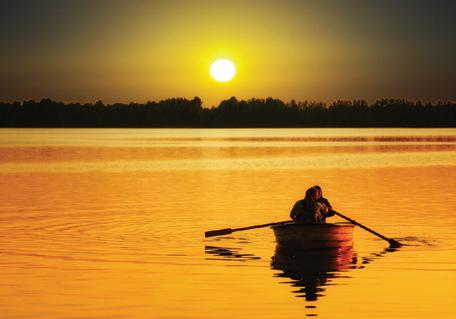




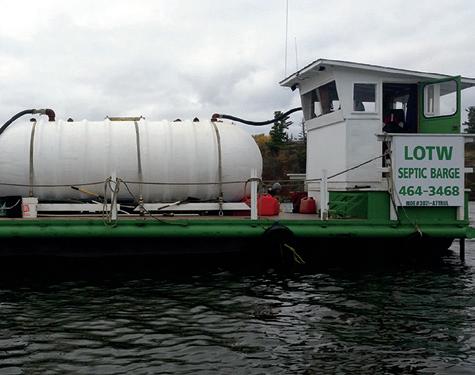




BY LORI NELSON
I remember, as if it was yesterday, when Verna Jagoe, then in her nineties, took to the podium at what was then the Lakeside Inn. Her beautiful smile won over the jam-packed room of people and their attentive response settled her nerves as she began to tell her story. It was the story of the Kenora Fish Market. Verna’s father Carl Lindstrom ran the business for over 40 years and Verna managed the office there.
…Monday and Fridays were the big shipping days. Over the year, hundreds of fish boxes, packed in 50- and 100-pound quantities, were shipped to markets in Toronto, Montreal, Fort Erie, Boston, Chicago, and New York… My job was to type the addresses on the tags and staple them to the boxes. The shipments were then picked up in the evening by Herb Wallin and Rickard Norlen with their two-ton trucks. The freshly iced fish were then delivered to the CPR station where they were put in refrigerated cars.
Also imprinted in my memory was the moment that Bill Arch and his wife Colleen of Onigaming First Nation entered the ballroom at the Inn. Bill was in full regalia. His head was adorned with a moose-hair roach and feathers. His jacket and vest were beaded with animals, birds, and the sun and the moon. His fan and bustle were of eagle feathers, his breastplate of deer bone, his anklets of bells. As he stood before all, he told the story of his regalia, fashioned by his wife—how it came to be and the significance of the symbols on it.
There was power in those stories.
The opportunity to share them publicly started in 2004, when a small group of us sat down one day to talk about potential partnerships for different history-related projects. Out of that discussion came the idea of a storytelling event. There was a realization that we have lost many great stories about our community, the lake, and the people who have lived here simply because we have never taken the time to hear them or those who were the keepers of those stories never had an opportunity to tell them. We wanted to change that.
After a year and a half of planning, the first Common Ground: A Sharing of Our Stories was presented in 2006. This day-long
storytelling event has continued since then (except for the COVID years) and has brought people together to share, exchange and listen to stories. Each story is as unique as the people telling them; however, there is one thing that links them all together. It is this place where we live—quite literally, the common ground that we share.
While we share this place, which serves as an anchor for the stories, our experiences vary greatly, and we have been able to hear and enjoy a wonderful mix of stories over the past 18 years.
We’ve listened to Indigenous knowledge keepers, summer residents, business owners, and descendants of early settlers. We’ve heard about salvaging old steamboats, homesteading, and the work of a wildlife rehabilitator. We’ve learned about family businesses, community events and organizations, and adventures on the lake. We’ve been introduced to powwow protocols, the teachings of the drum, and how to build a birchbark canoe. And we have become acquainted with the special people and places that have defined home for every storyteller.
I remember well Shirley Richardson’s low, rich voice as she told her personal story of growing up in England, living in Canada, and eventually becoming a longtime lake resident. Hers was a fascinating account of a life well-lived and some of the final words of her story, I think, will resonate:
We called the island “Kalamalka”, thought to be an Indigenous word meaning “lake of many colours” … As you all know, Lake of the Woods is a lake of many colours – orange and red at sunrise and sunset, shades of blue sometimes filled with a zillion sparkling diamonds, and I have seen shades of grey, pink, mauve and black. At night, the full moon sends a spectacular lane of reflected silver from the Canoe Channel, across the Yacht Club stretch to our front living room window. Magical! How lucky we are to share this beautiful lake.
This year’s Common Ground: A Sharing of Our Stories event will be held on Saturday, April 26. Please contact the Lake of the Woods Museum for more information. an


